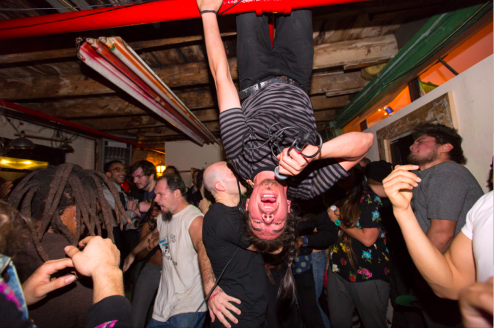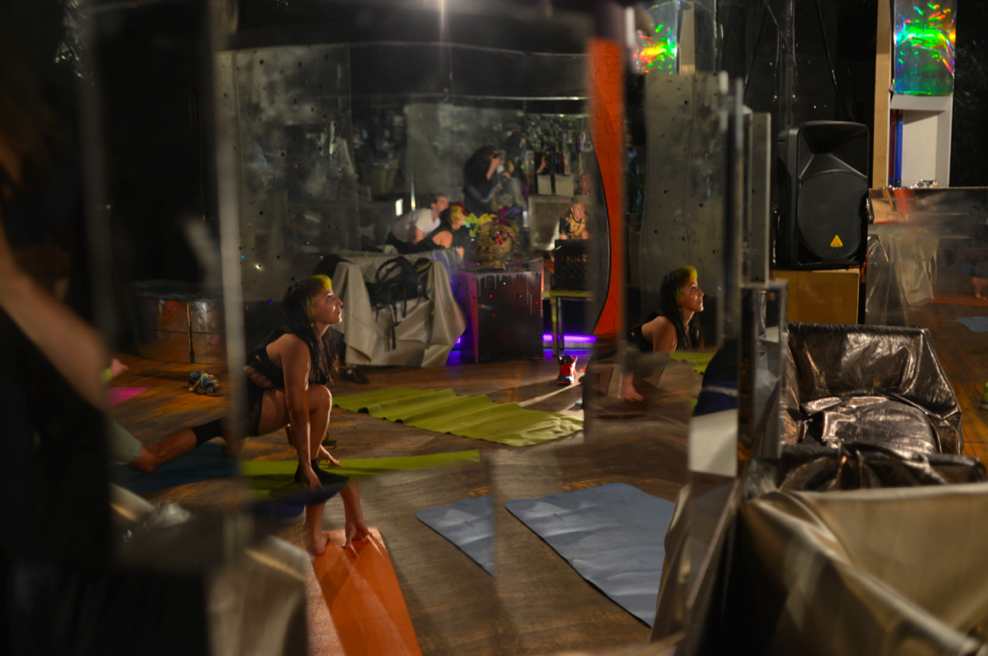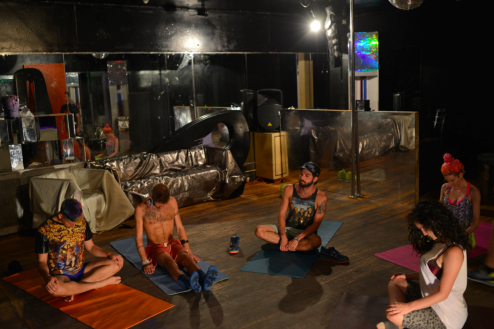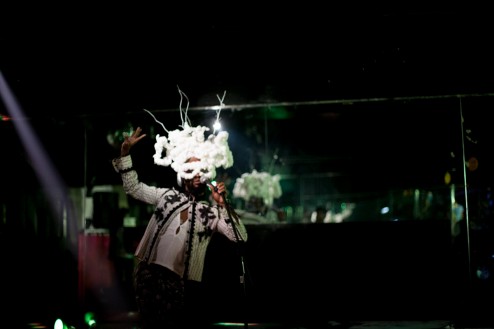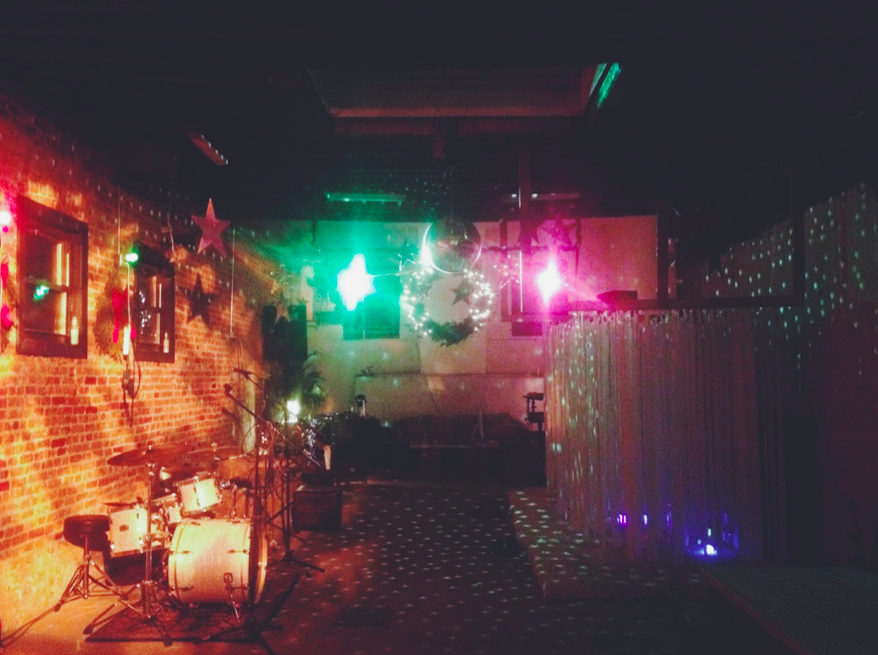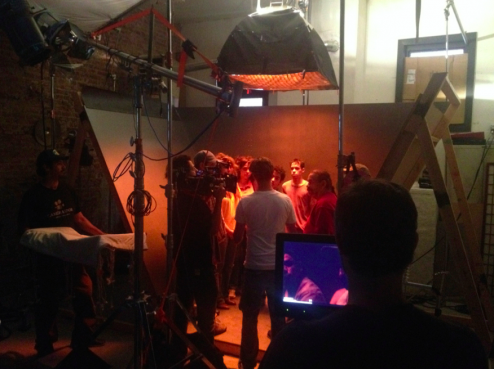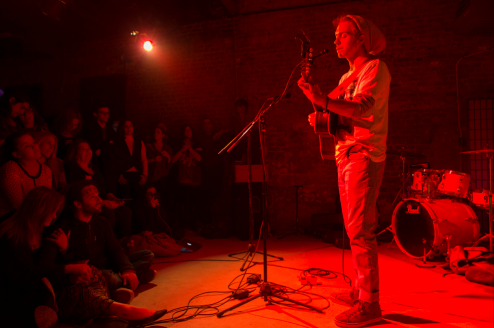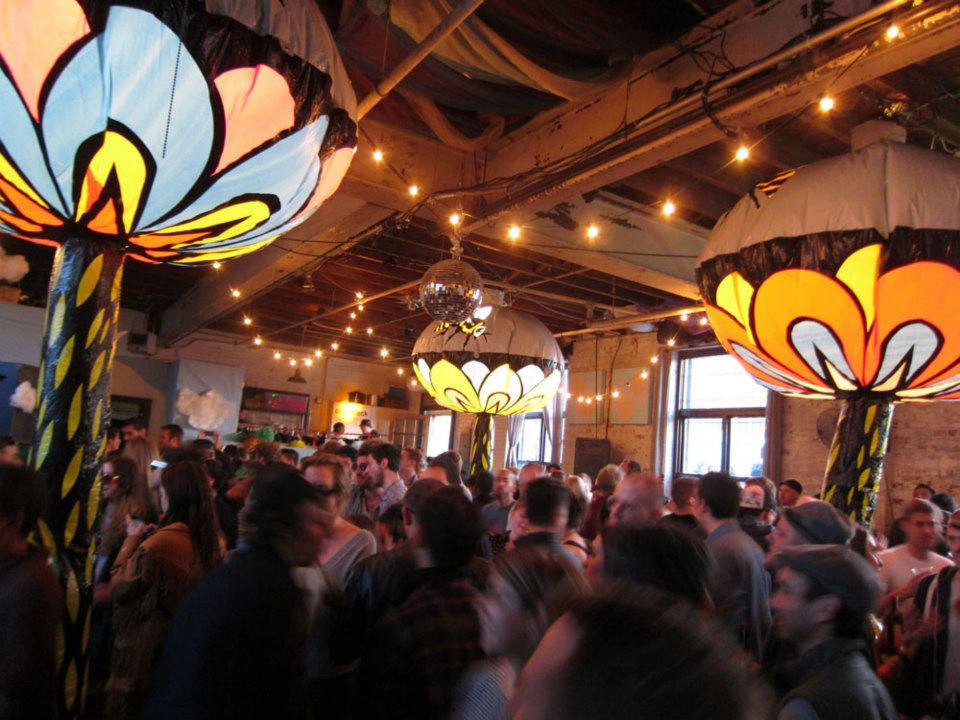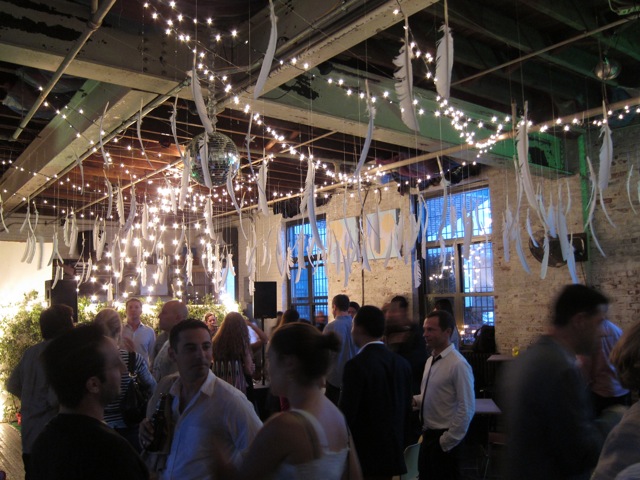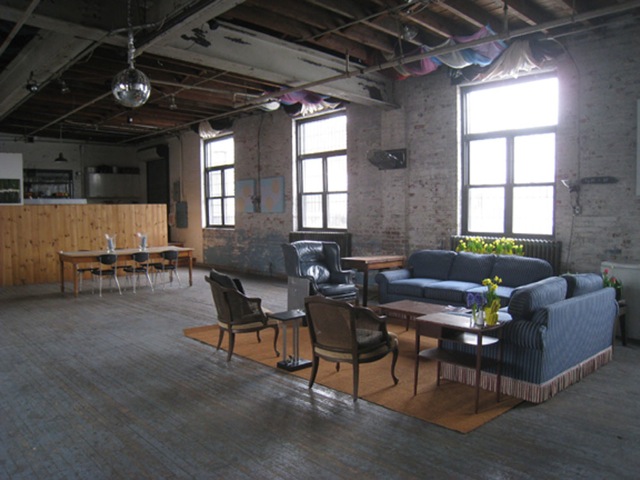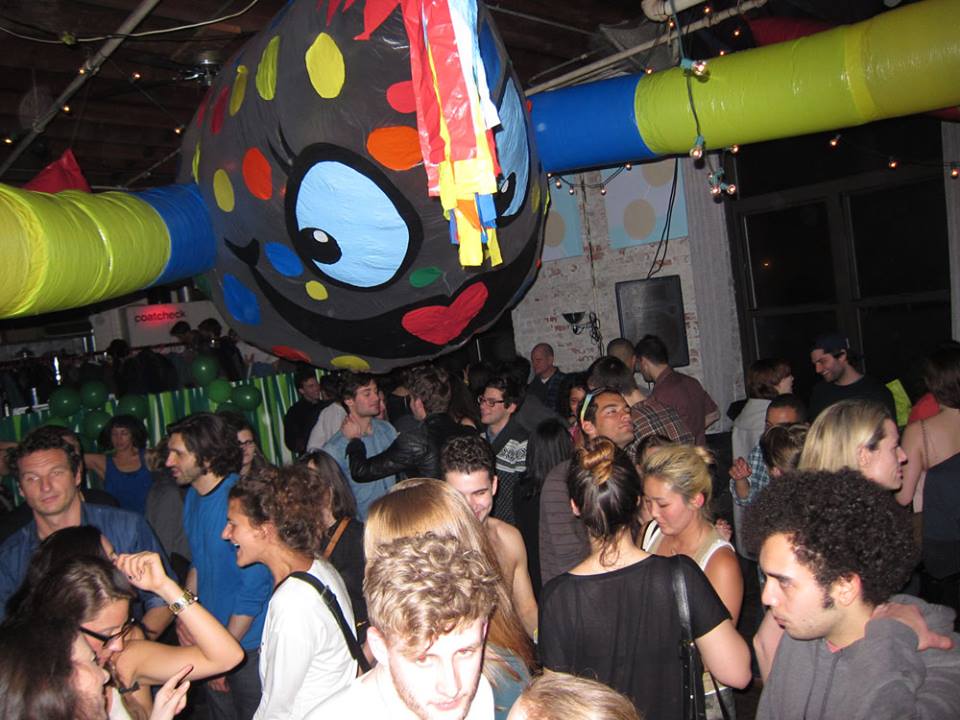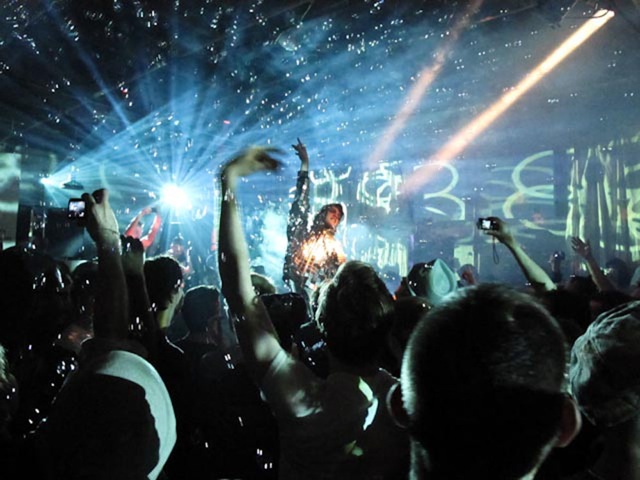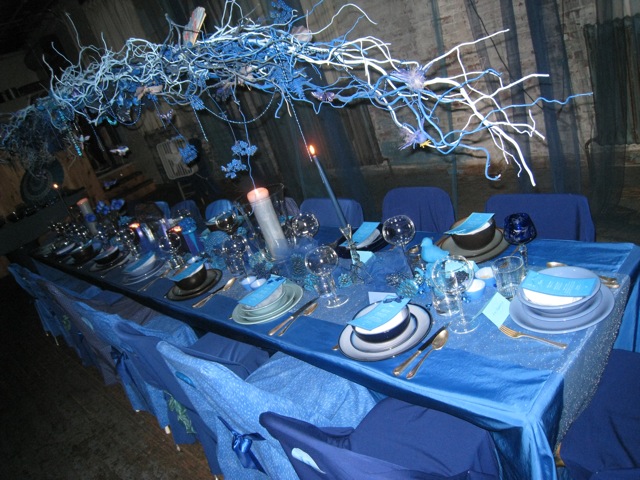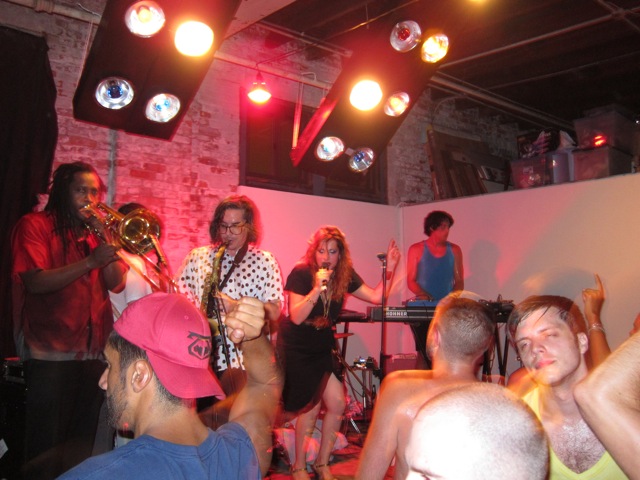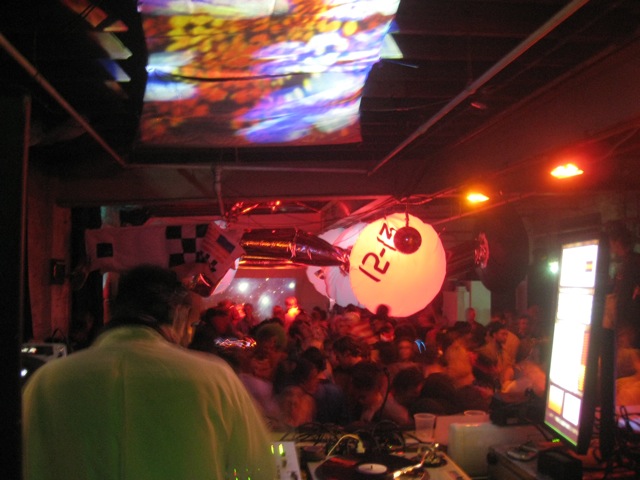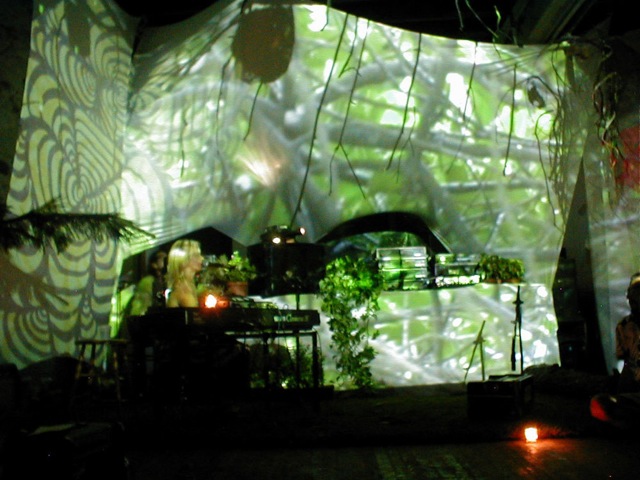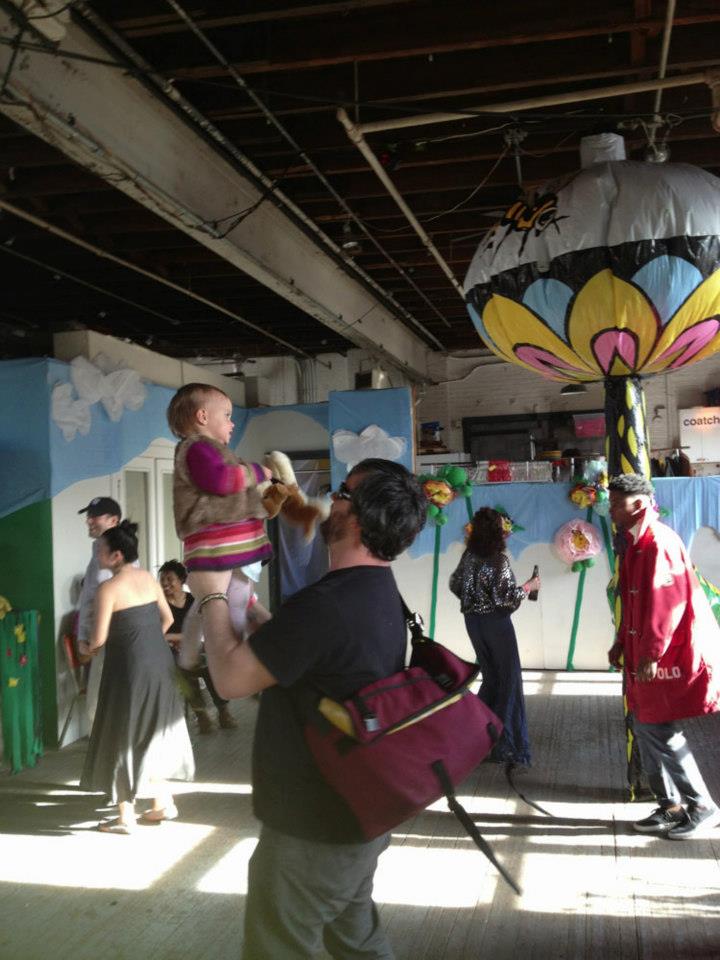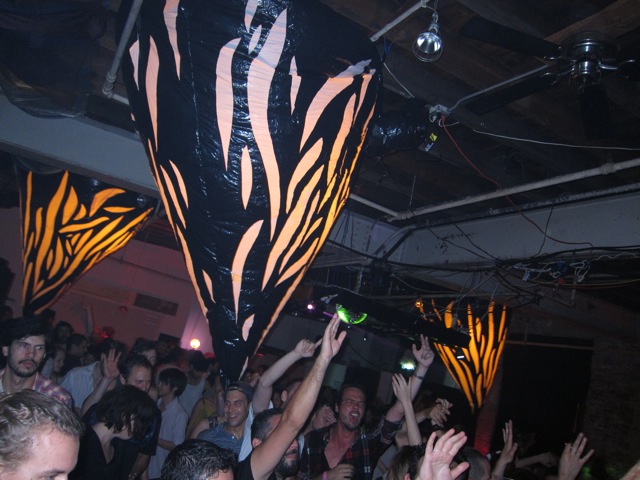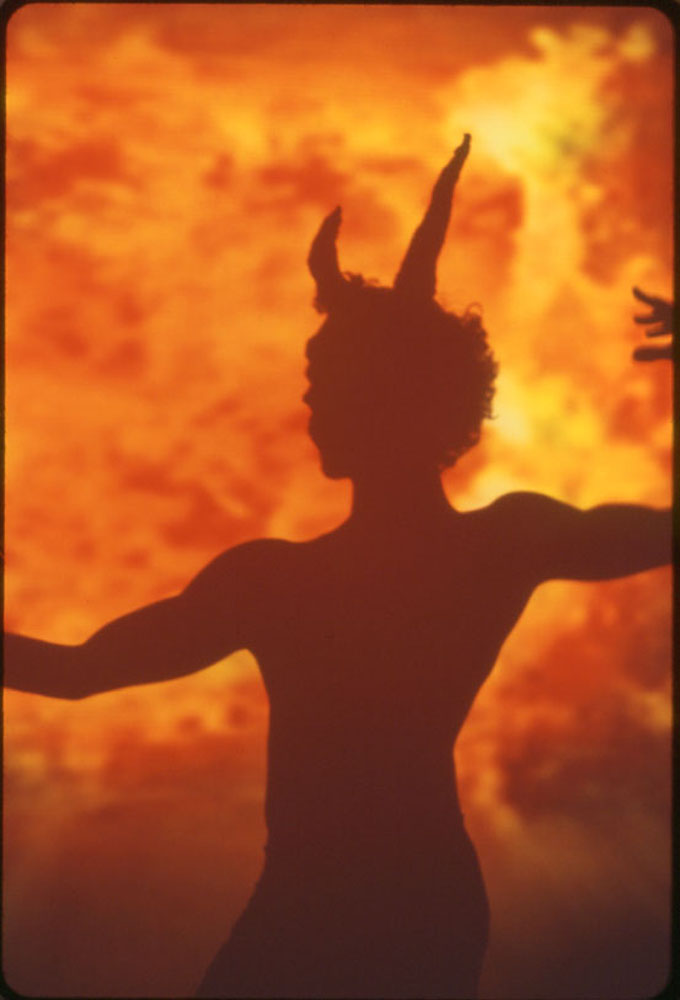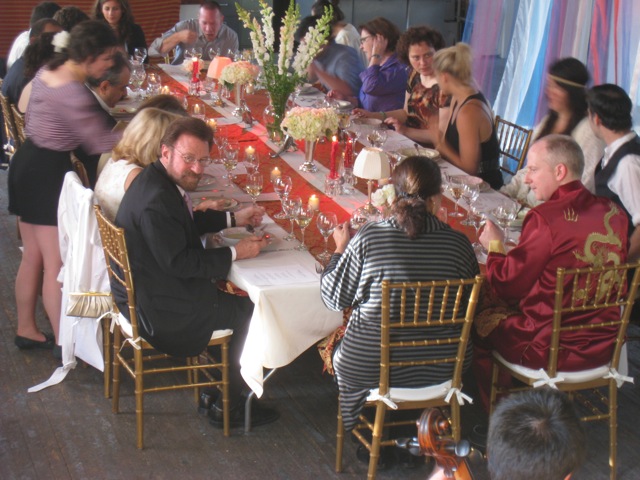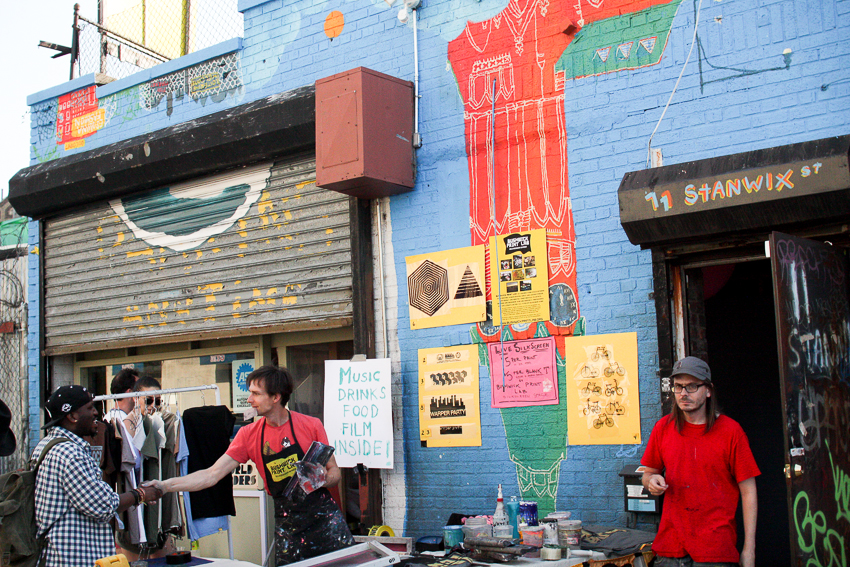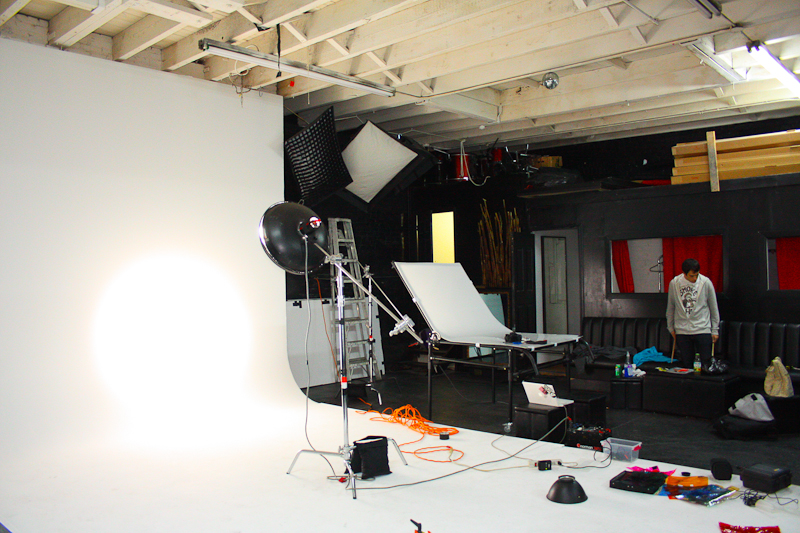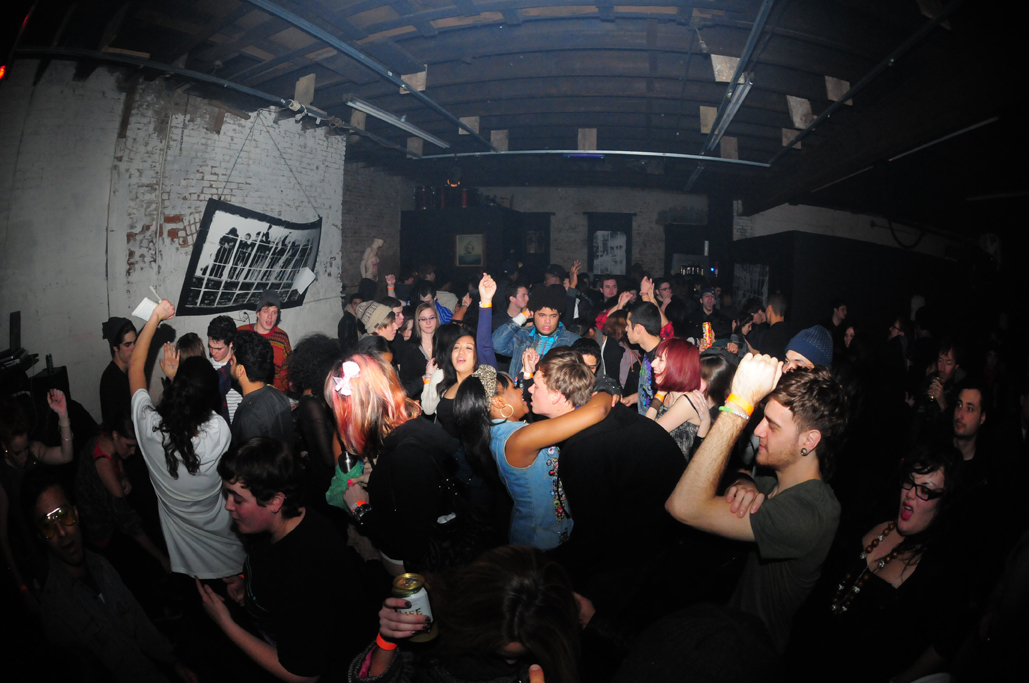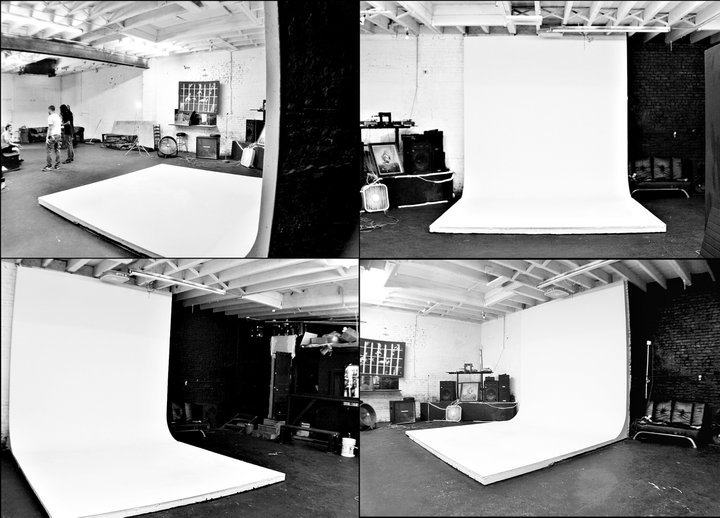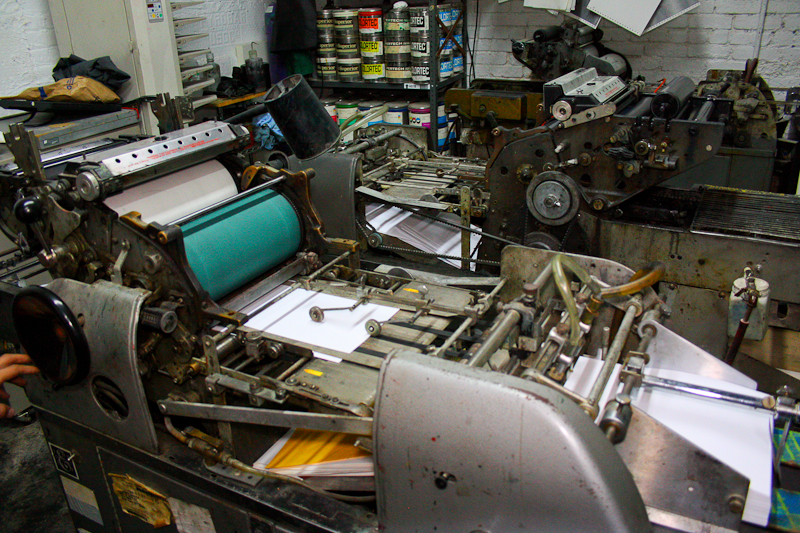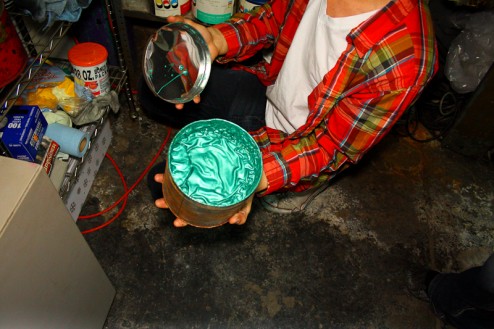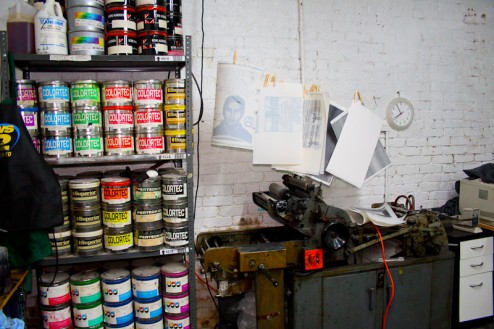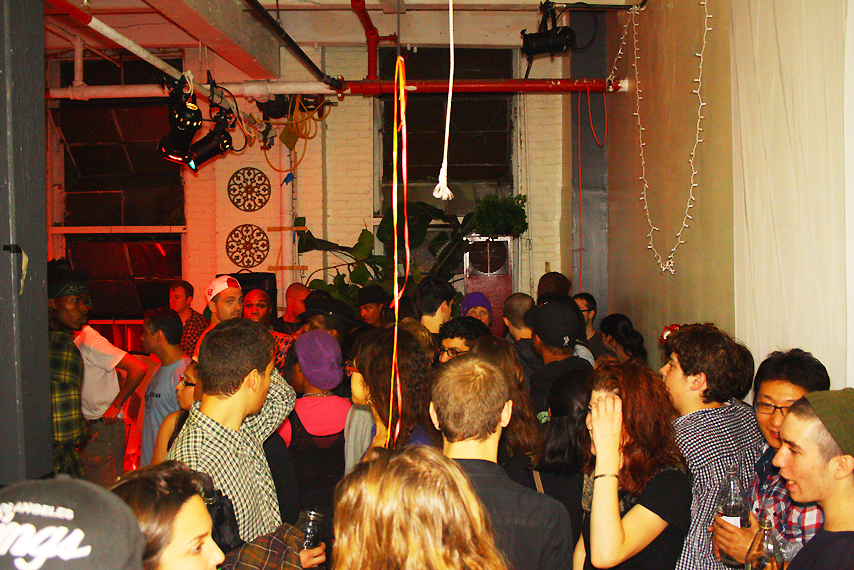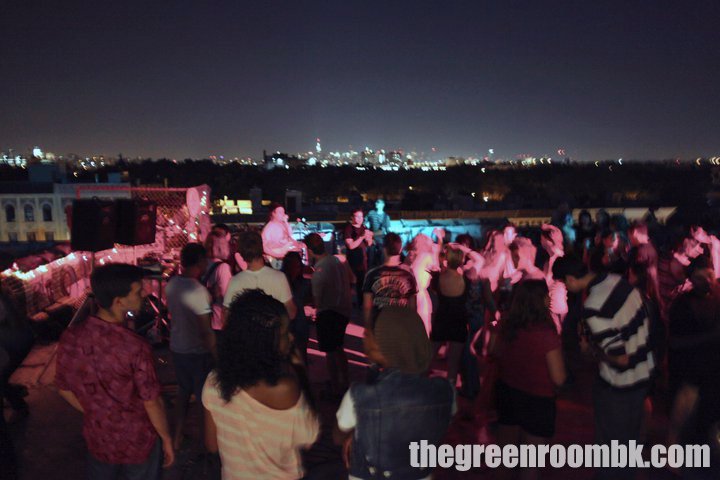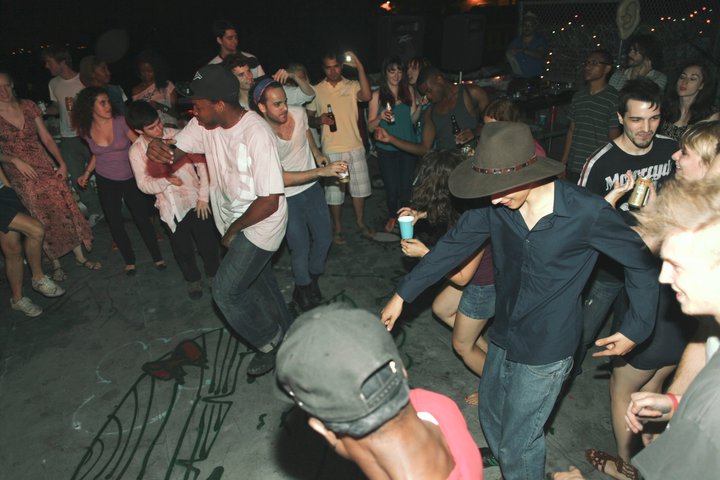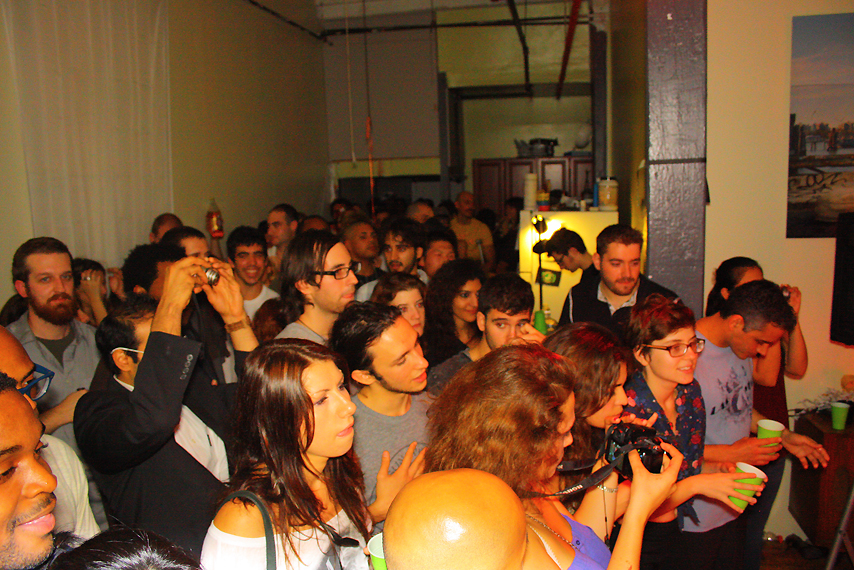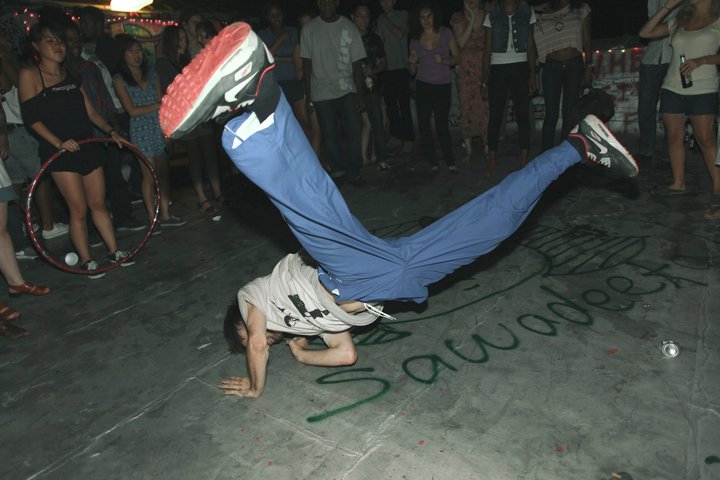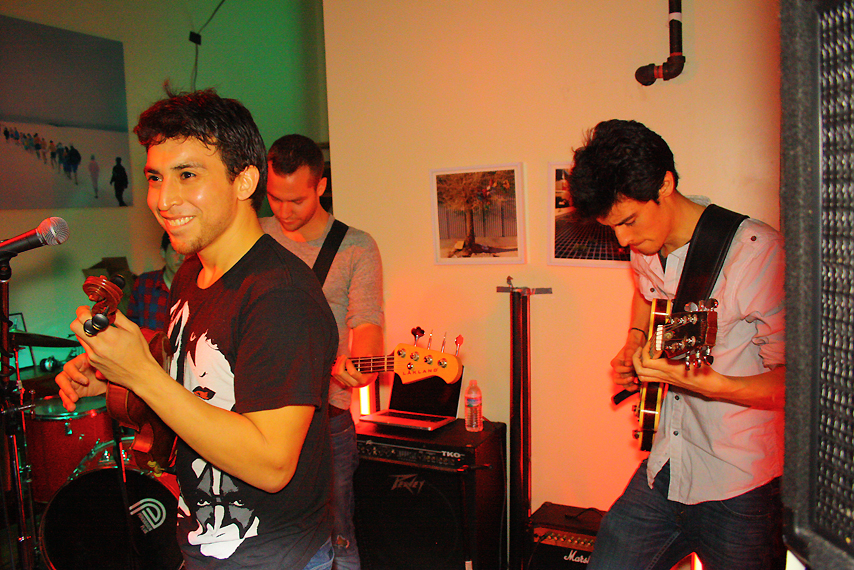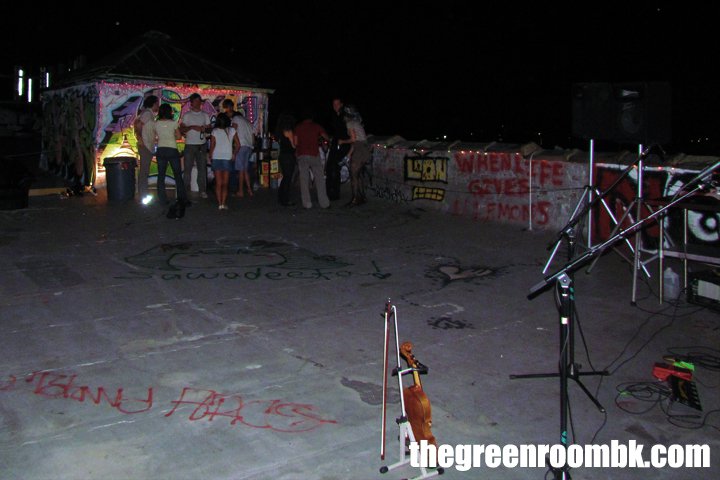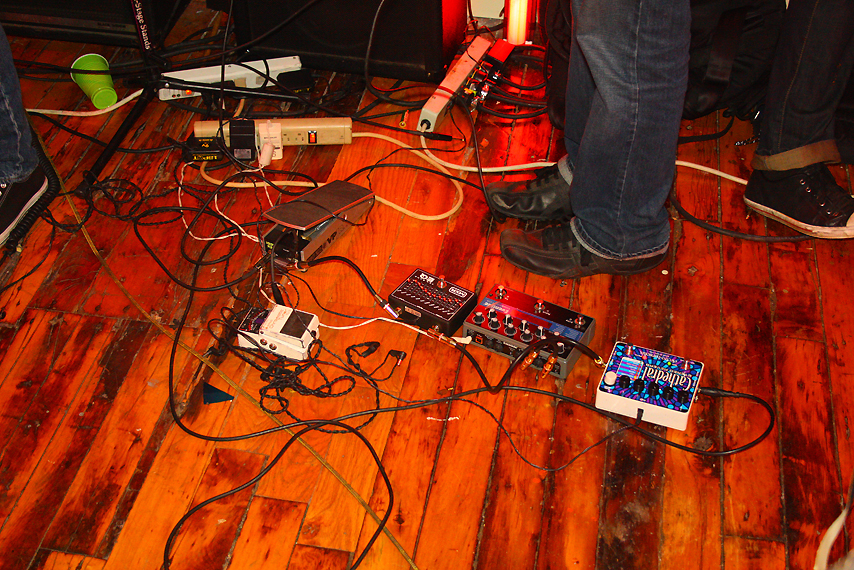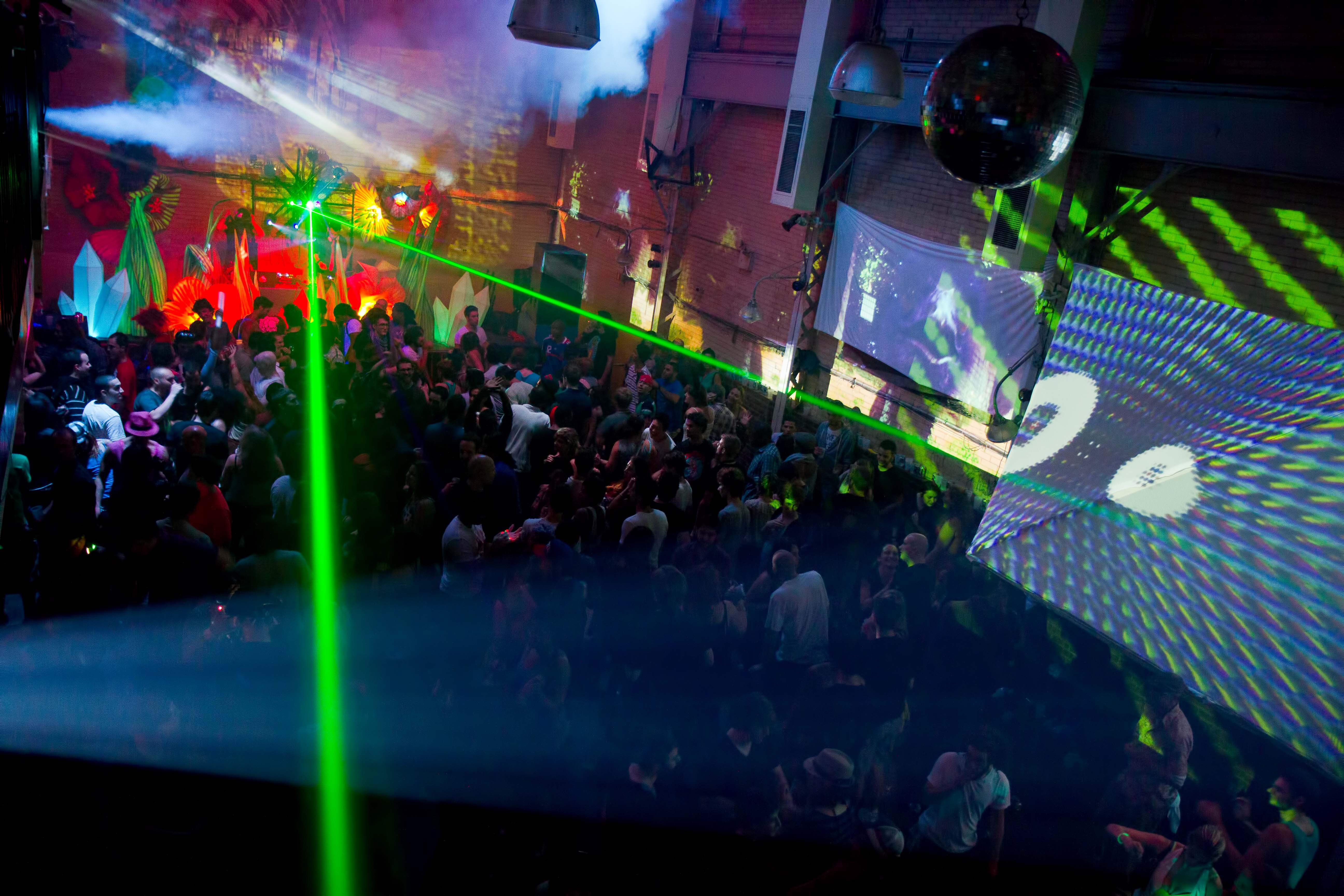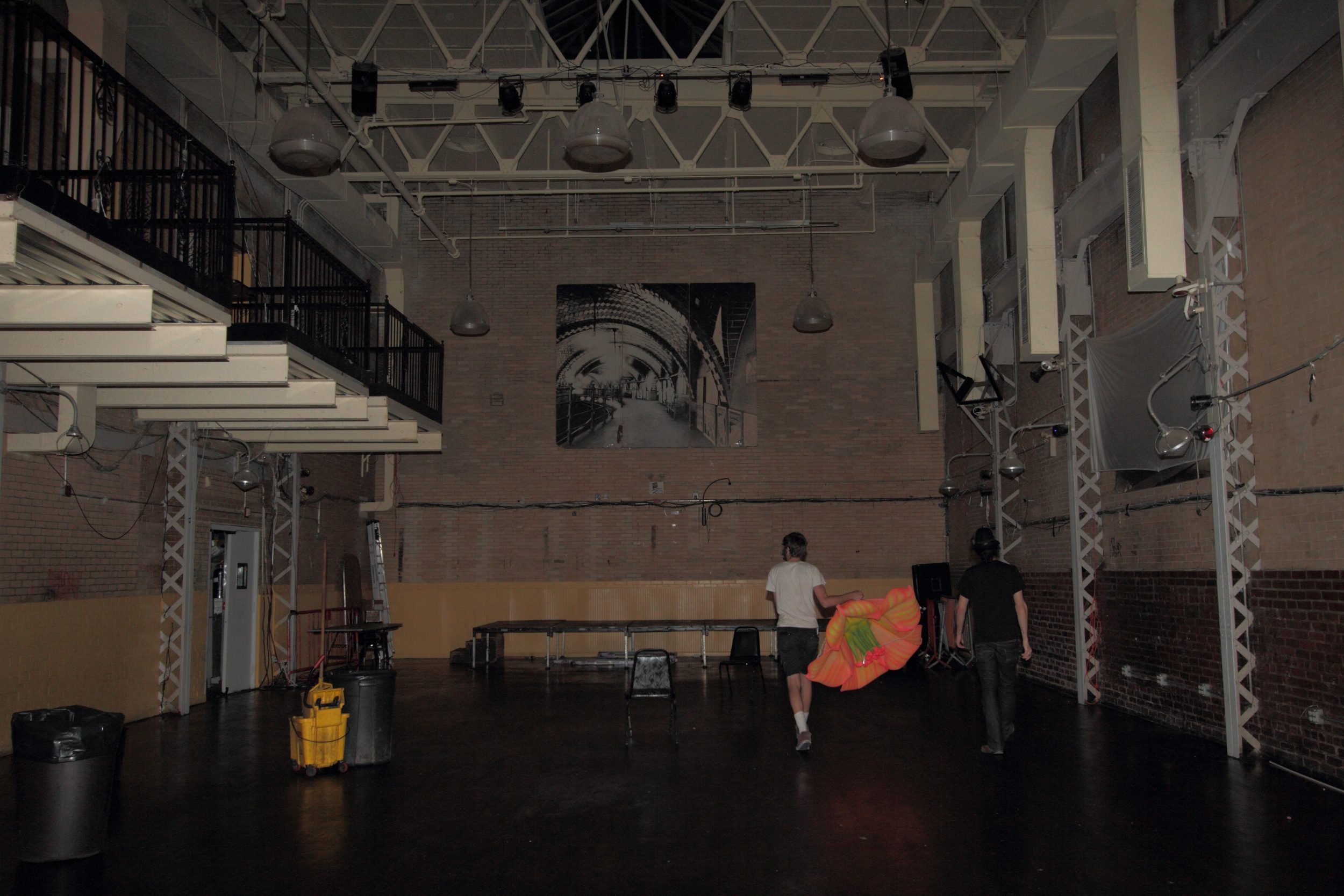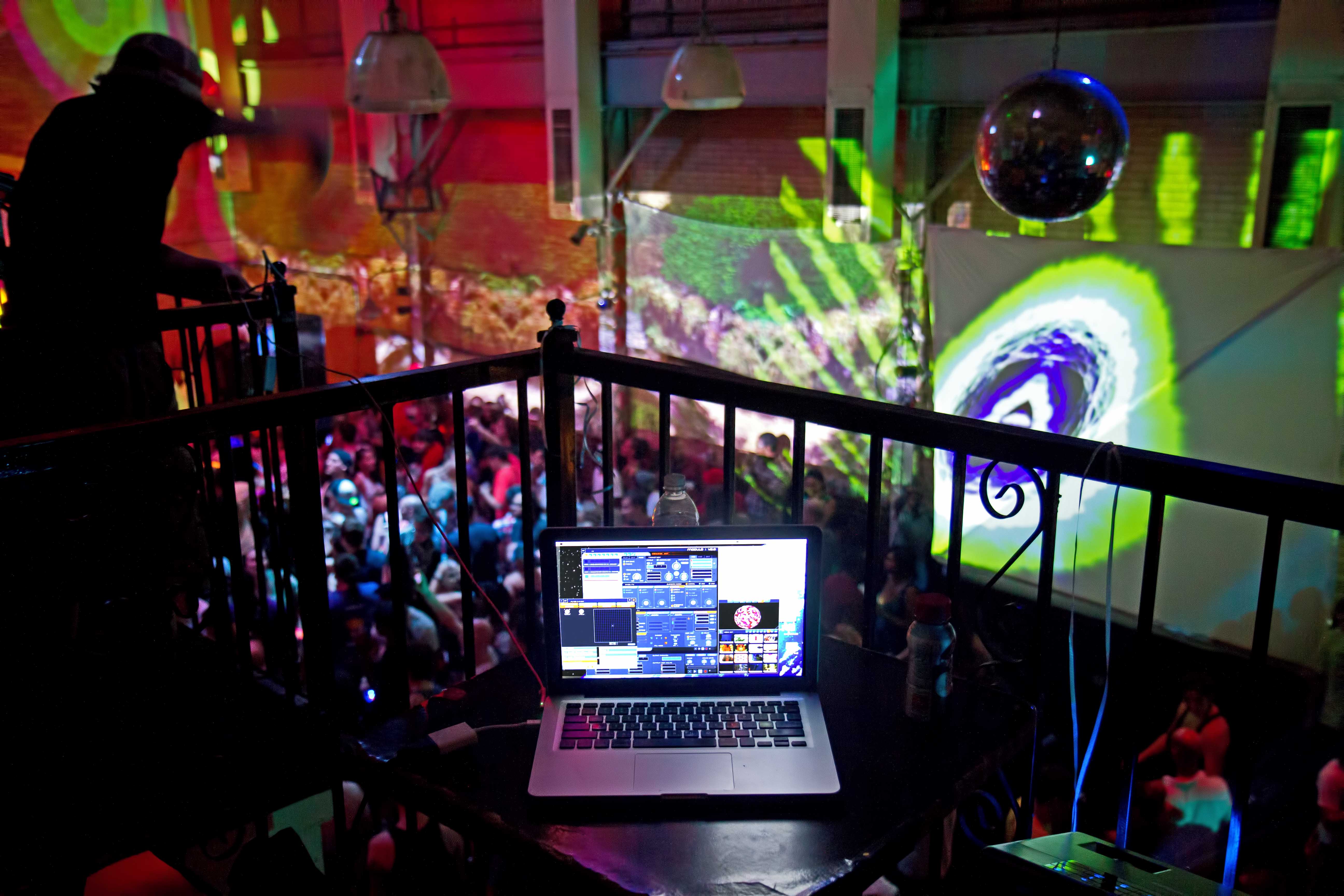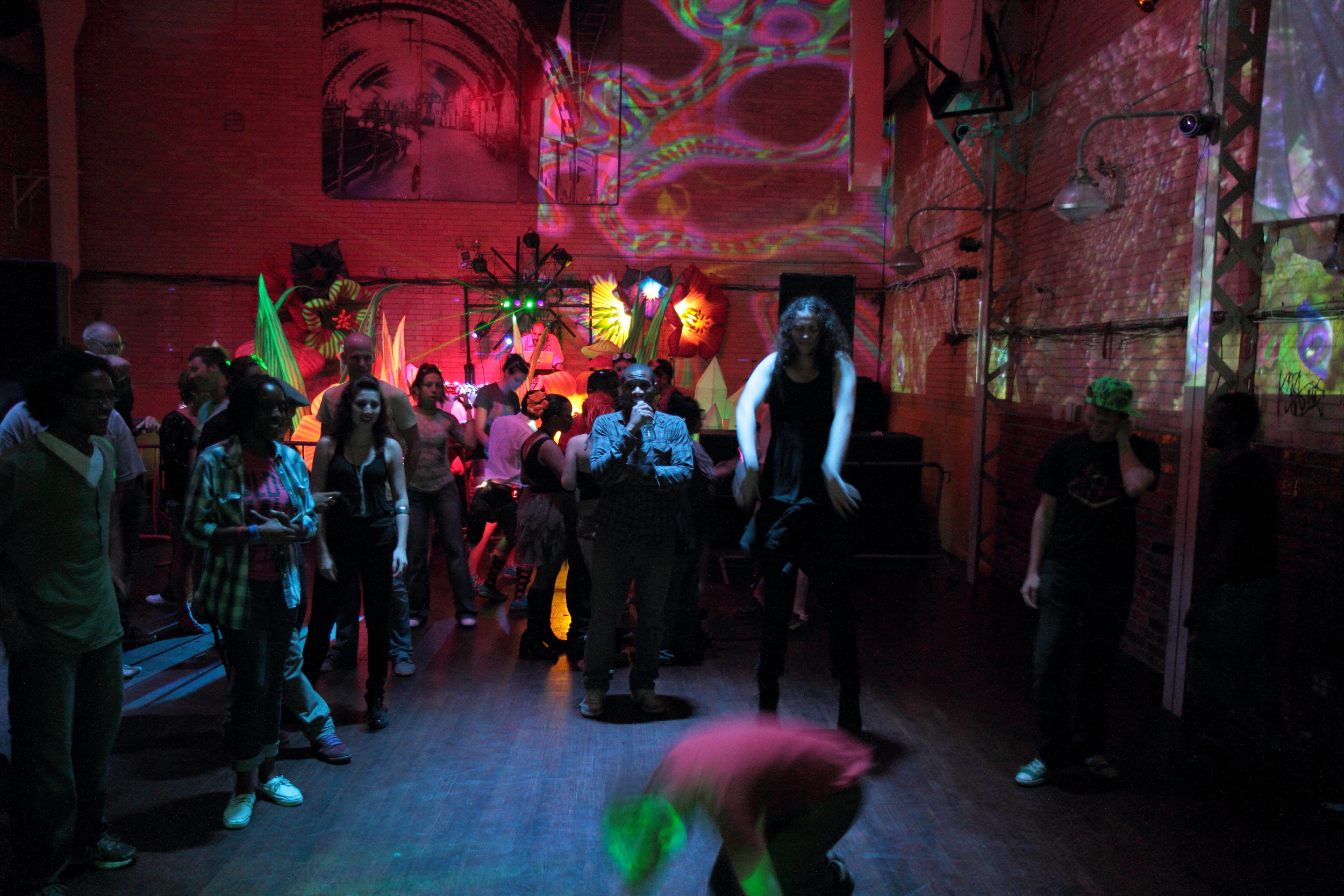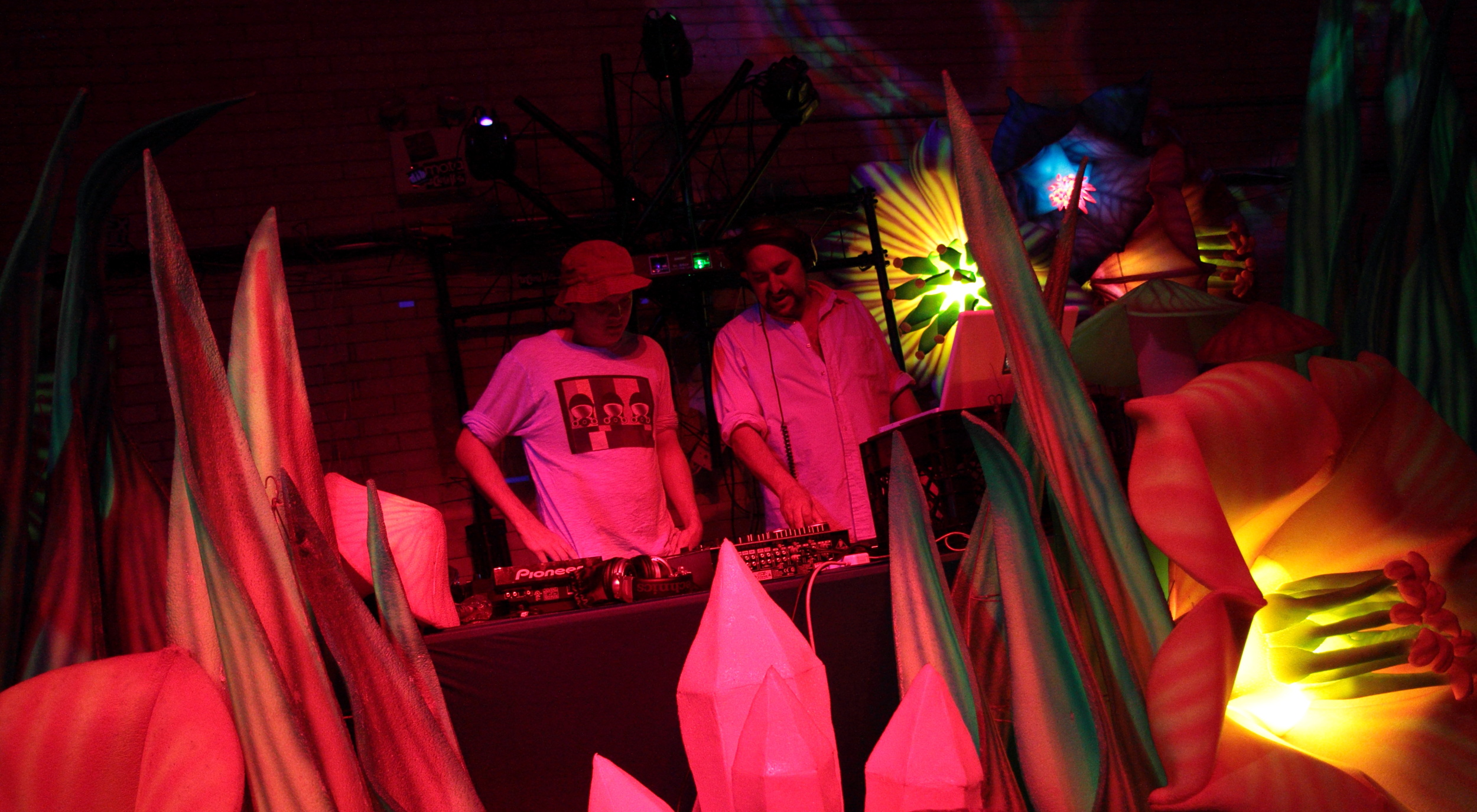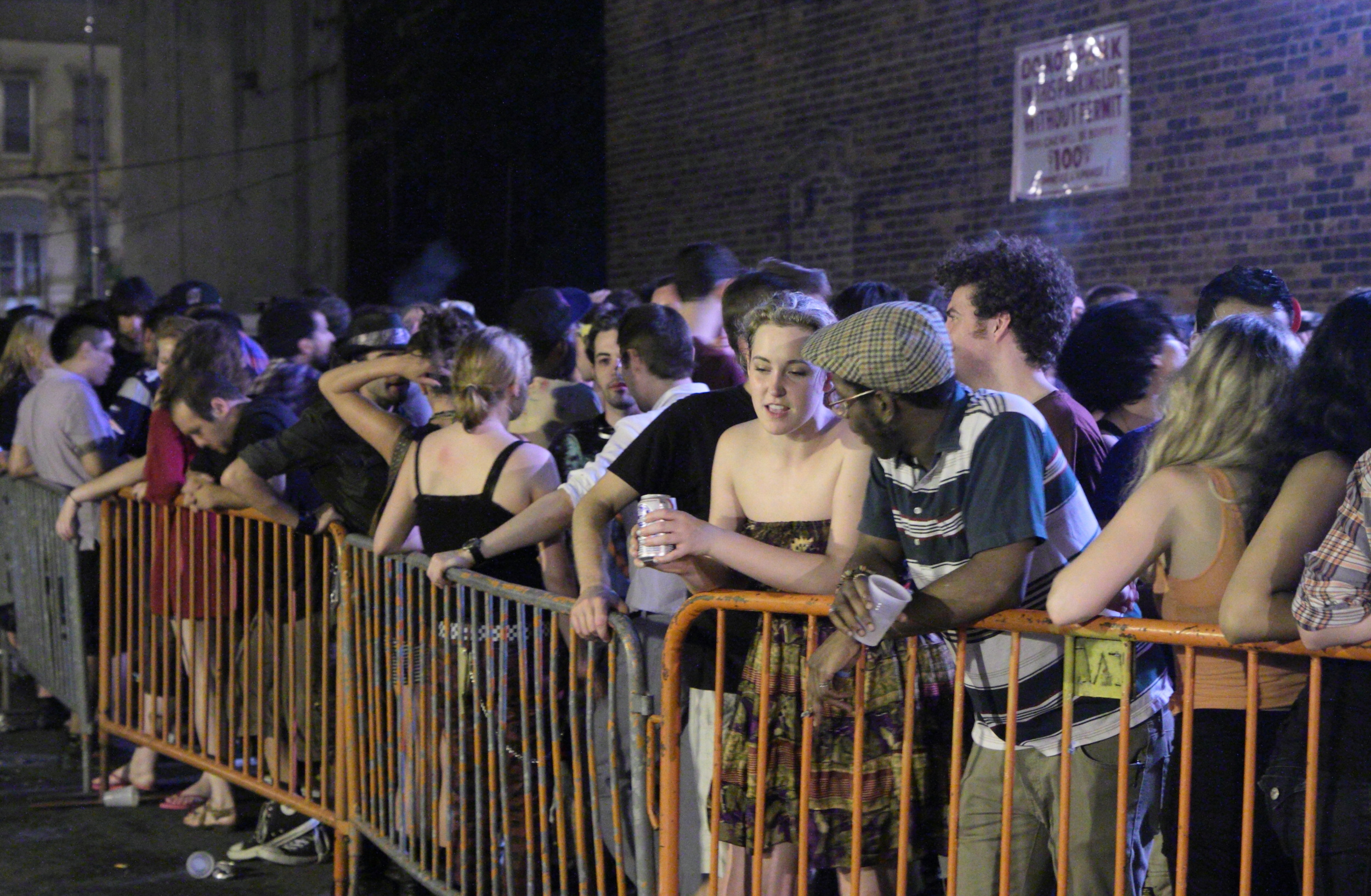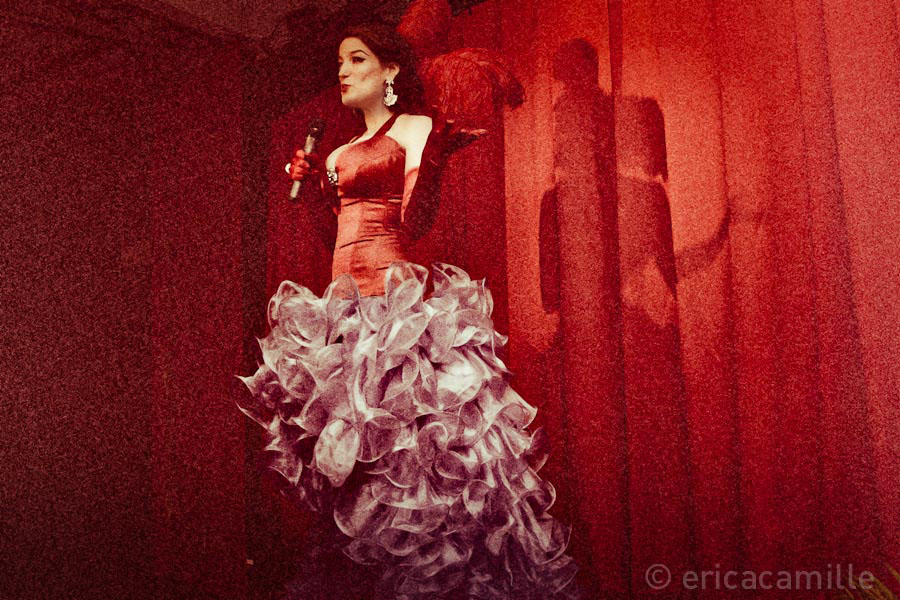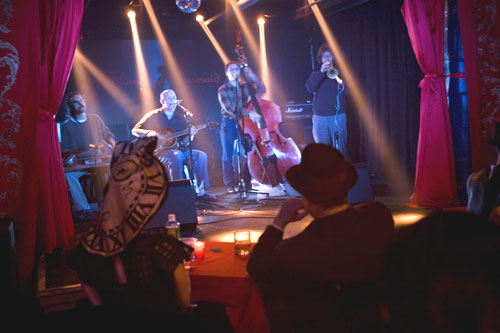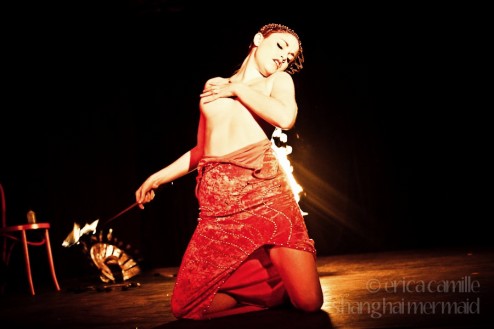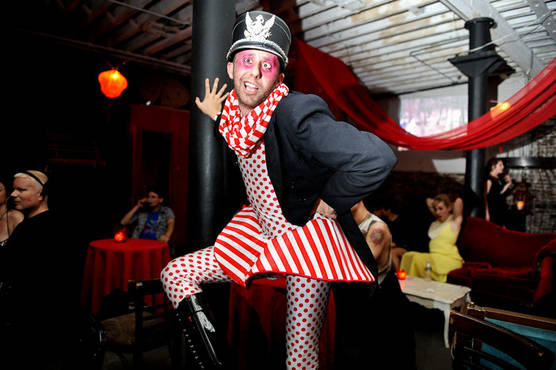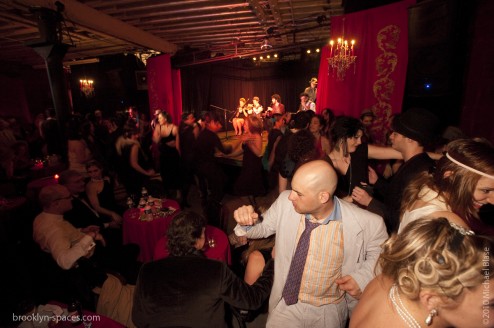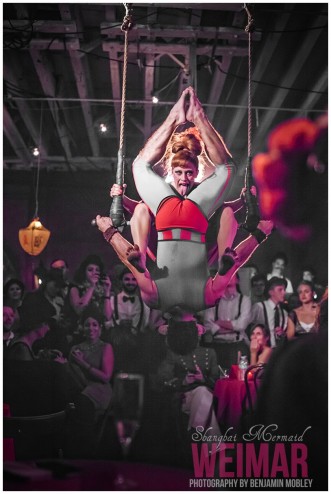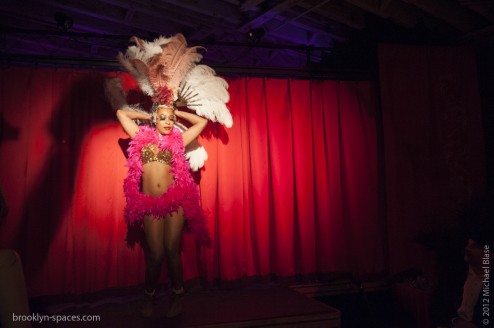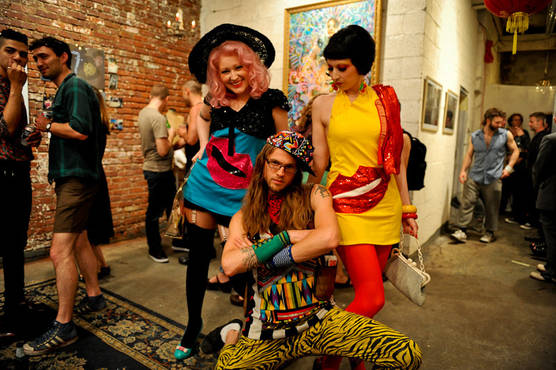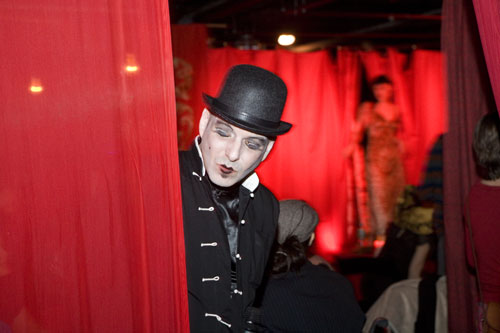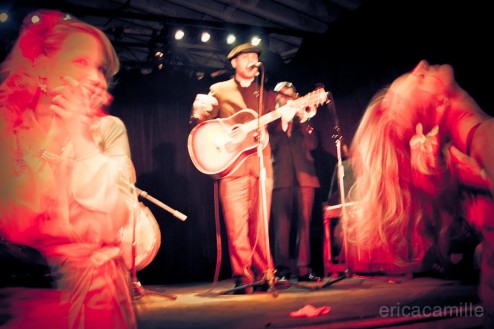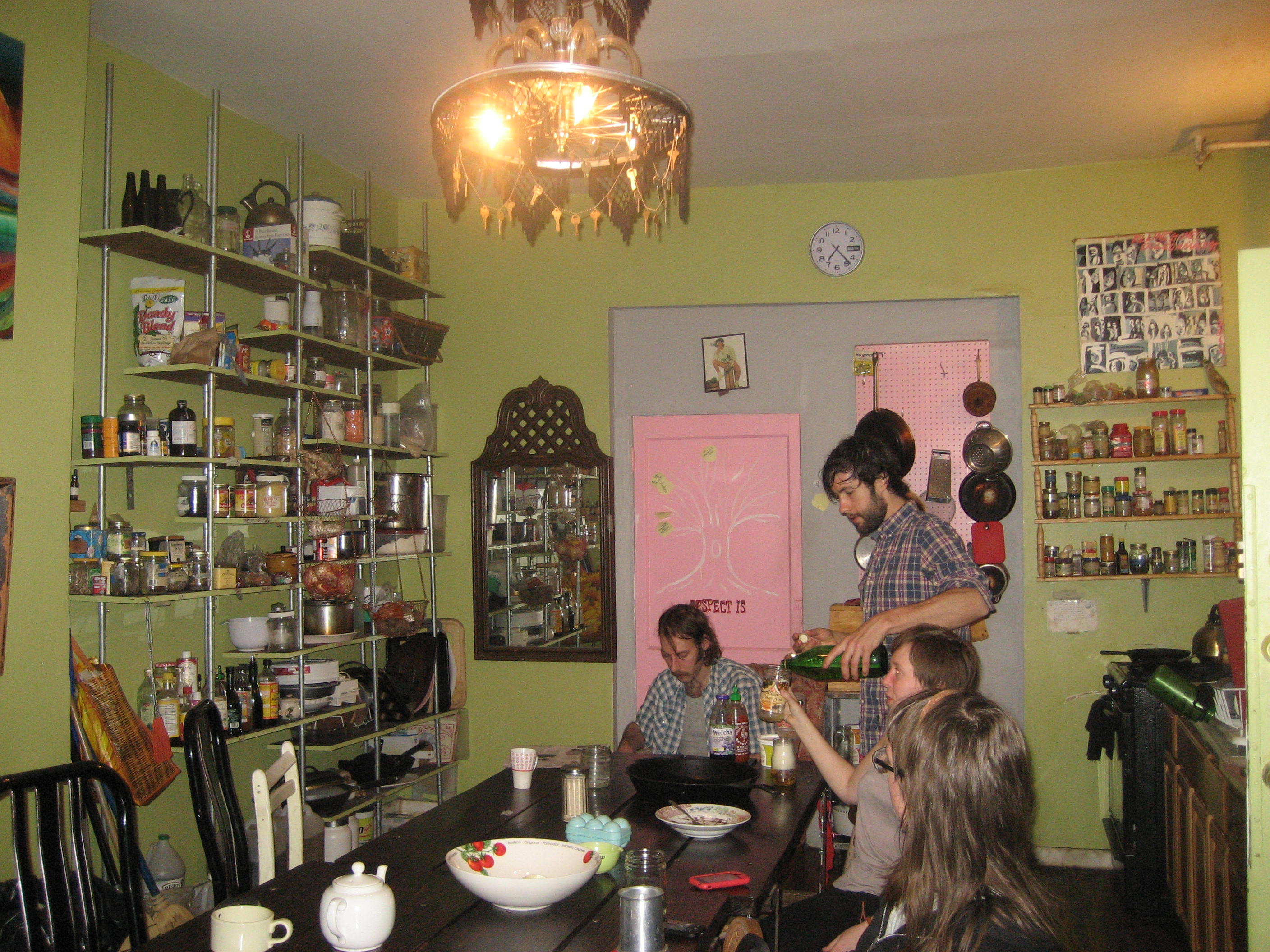neighborhood: ridgewood | space type: music, art, events | active since: 2013 | links: website, facebook, twitter
By now everyone probably knows the storied history of the Silent Barn. The band Skeletons started the DIY venue in their Ridgewood apartment in 2005 (which I profiled back in 2009), and until 2011 it was a raucous, dingy, rollicking good time—and then they got ransacked. Around $15k worth of equipment was destroyed, and then the city came in and evicted them. That probably should have been that, but the Silent Barn launched a Kickstarter, which brought in more than $40k. So they decided to start over, but this time, to be as legit and legal as they could be.
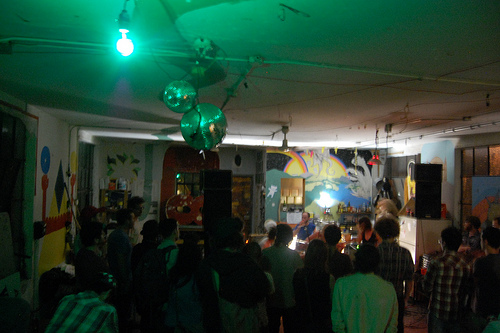
the Husk; photo from Showpaper
Fast forward to early 2013, and the Silent Barn 2.0 opened its doors in Bushwick. The new incarnation is definitely a continuation of the Husk (which the original space is now called), on a much bigger scale. The building itself is a lot lager—three floors and a yard, with eight bedrooms, thirteen roommates, three stages (or more, as needed), an art gallery, a dozen art and recording studios, and on and on. The scope is bigger too; in addition to music shows nearly every night, there’s the Babycastles videogame collective, science art, Aftermath Supplies artist reuse shop, multimedia video art events, a supper club, piñatas, theatre groups, and a whole lot more. And the community involvement this time around is huge: there are about 150 people participating, in various degrees, in the conceptualizing and running of the space. Administration is framed on the metaphor of a kitchen, and there are about 60 Chefs, each responsible for keeping a small aspect of the Barn going. It’s all volunteer, all consensus, and all making it up as they go along. It is, I think, pioneering a new way to do DIY—intentional, flexible, transparent, and innovative. (Want to join in the fun? Go here.)
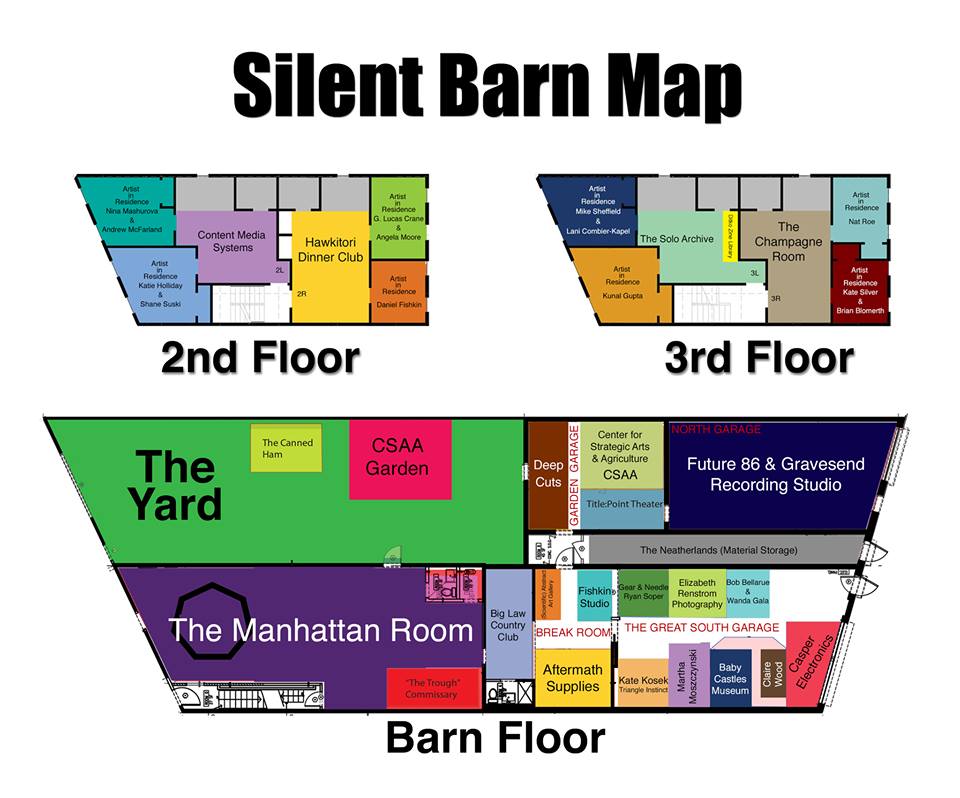
Here’s a short Q&A with Katie, the Press Chef, and below that I asked two questions of a dozen different Barn members: 1) What’s your favorite event you’ve participated in here, and 2) Why, out of all the myriad ways you could be spending your time, is Silent Barn where you want to be?
brooklyn spaces: From the structure of the collective to the special vocabulary to all these working groups—did that evolve spontaneously as you figured it out, or was there a model you were working from?
Katie: We’re making it up as we go. We have weekly Kitchen meetings with all the Chefs, and part of that is Stew, which is all our discussion topics, whether it’s what murals are coming up or how to deal with conflict resolution; everything goes in the Stew and we work it out together.
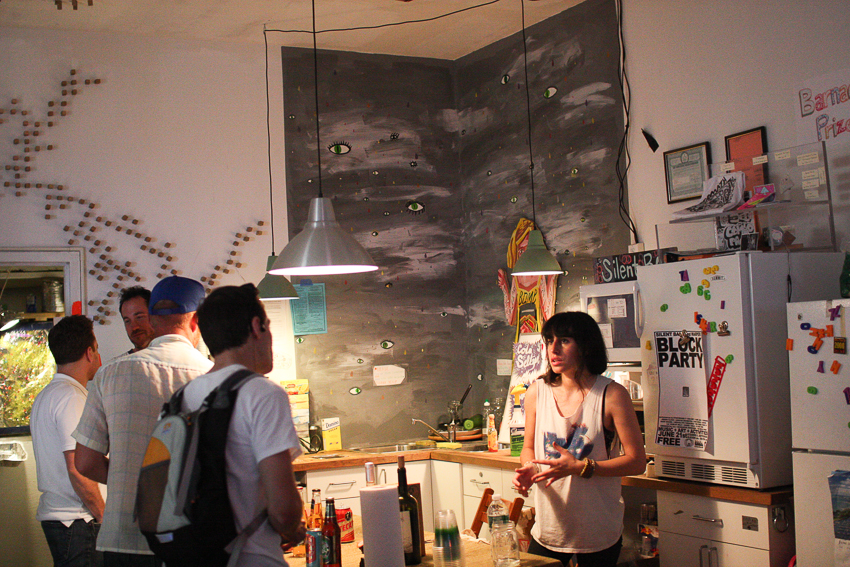
all pix by Alix Piorun unless noted
brooklyn spaces: I love that. I feel like this space is really breaking new ground in a lot of ways, sort of changing the meaning of DIY in Brooklyn.
Katie: Well, there’s a responsibility here. Places come and go, you know? When the Husk was ransacked, we had such a huge reaction from the community, so it was our responsibility to do things the right way. After the Kickstarter, we could have re-opened the next day—and then probably gotten shut down again. So we decided to focus on longevity. I think we’re really on the right path. People always try to define DIY; we’re still doing it ourselves, we’re just doing it differently. It’s not like we’re trying to change the model for other spaces; this is just what we have to do. Plus look at this! This place rules! This never would have happened if we hadn’t taken the route we took.
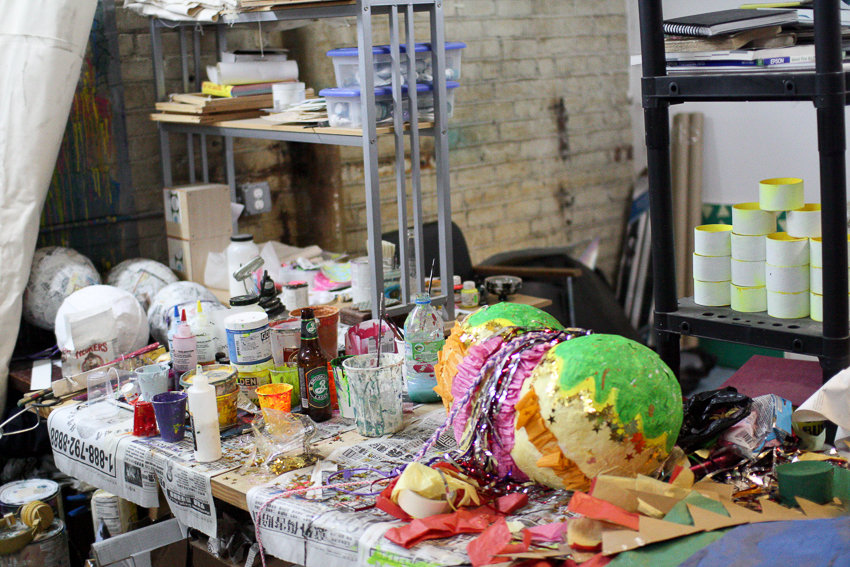
Martha Moszczynski’s painting and piñata studio
brooklyn spaces: What are your thoughts on the neighborhood? What’s it like being in Bushwick now, especially after having been in Ridgewood?
Katie: We’re really trying to make ourselves an asset to the neighborhood. We go to community board meetings every month. We want people to know us and recognize us, to know that they can come to a show or book a show or play a show or put up some art. We really want to find new ways to integrate with the community and make our presence a positive thing.
***
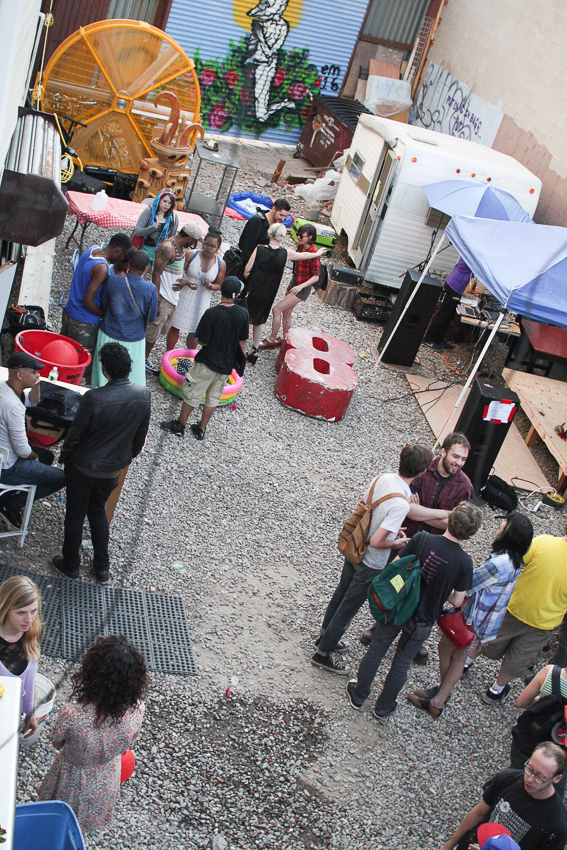
brooklyn spaces: What’s your favorite event you’ve participated in here?
Katie: I like the ones that seem to be holistic Barn, like when there’s a house show and a complimentary show downstairs. Like the Modular Equinox, which took place in every single room. It was really neat to have that kind of foot traffic everywhere, even in the “private” areas.
Tricia: Lani’s birthday party. We had been holding our breath waiting for a liquor license for so long, and I think that was the first show where we’d really come into our own. It was this giant wild night, everyone went crazy, just the whole Barn partying.
Joe Ahearn (Showpaper): This question never gets easier. I’ve seen / thrown / taken part in easily over a thousand shows at Silent Barn! My favorites are those that come out the blue from old friends, the ones that have strange challenges, the ones with moments that feel like magic, the ones that somehow discover a new way to use a place that thousands of bands have been playing with for years.
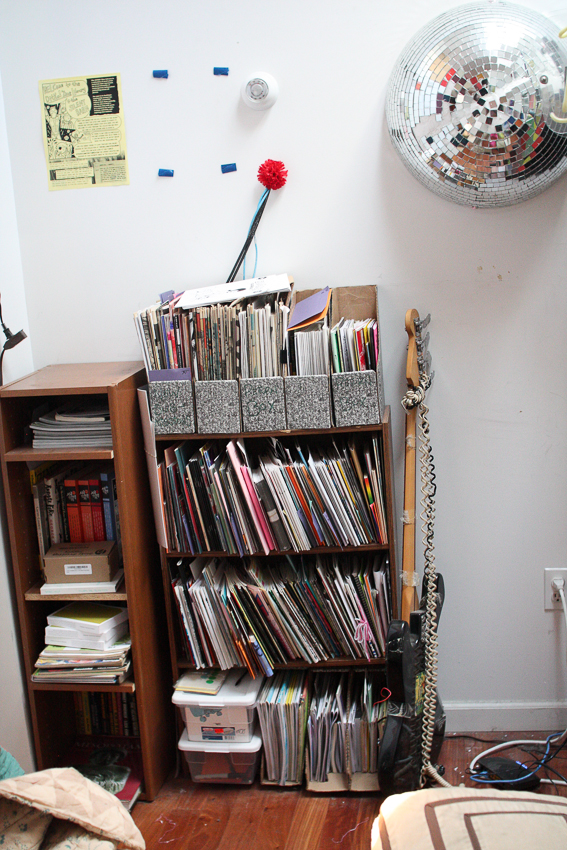
zine library
Mila (website): I trust that if I show up on any given night, I will see something intriguing. One evening that stands out is the Public Meeting we had in May,“Women in DIY.” It was amazing to see the room filled with women who have done really extraordinary things. It felt supportive and positive, inspiring and motivating, to be a participant in this community.
Theresa (Internal Events Chef): The Wild Boys Immersive Party, which had performances, dream machine, food, piñata, art, community costumes, etc.
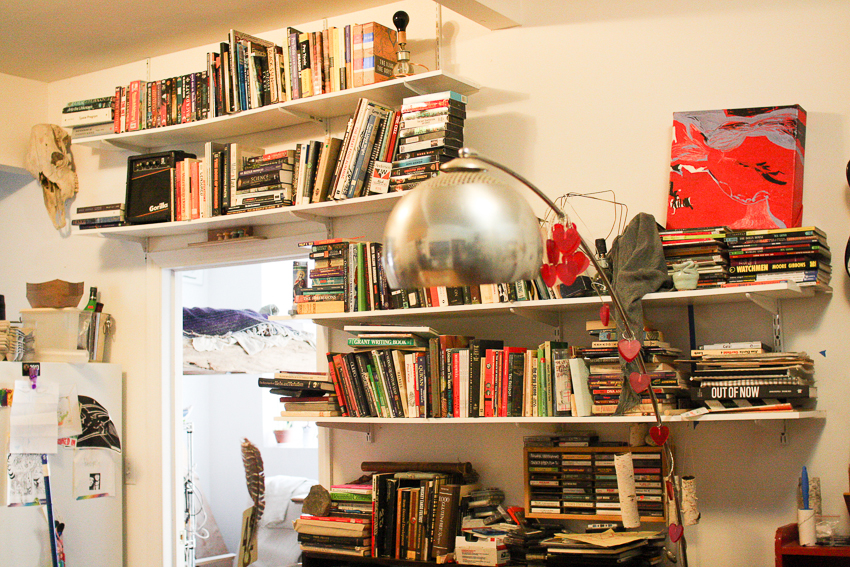
another living room; sometimes transforms into the Hawkitori Dinner Club
Larissa (Paesthetics Octopus): No offense to the events (and I’ll give another shoutout to that Modular Solstice night when there were three completely different events going on simultaneously), but it’s the times in between the events and the things that happen because events are going on that I most remember.
Arielle (Aftermath Supplies): My favorite events are the ones I don’t show up for on purpose. I’ll be working in the shop or my studio and there will just be someone singing their heart out or the most nasty thrash band totally destroying. I stumble into the show room with total awe and appreciation of what’s going on and that I happen to be there to witness it.
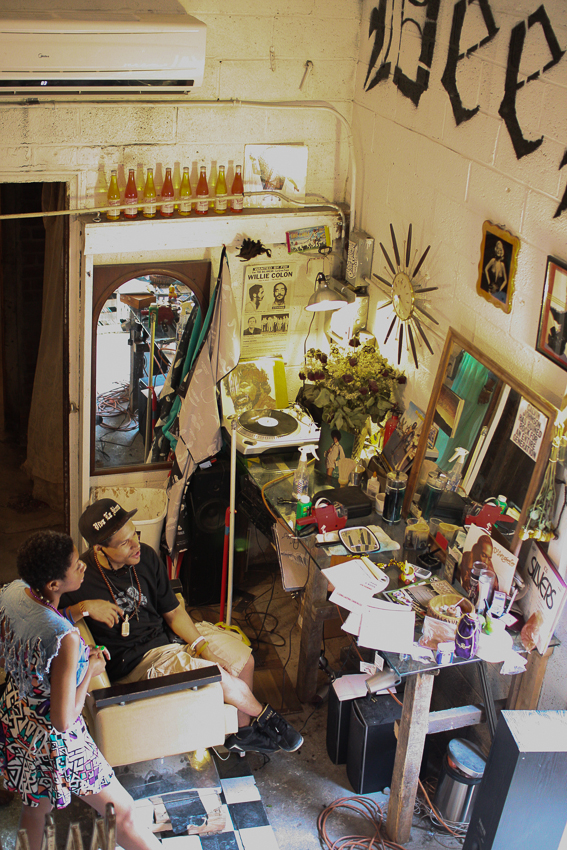
Deep Cuts (barber shop + record shop)
Nathan Cearley (Dark Cloud Chef): On the one hand, I really love the Modular Synthesizer Solstice and Equinox shows I curate here, because I always include so many individuals who are part of the community and have such crazy visions about weird electronics. On the other hand, I really love our weekly administration meetings because it’s crazy how much we get done for a group with no traditional top-down hierarchy. Both “events” speak to the possibility of surprise still existing in such a dead, predictable, monotonous society.
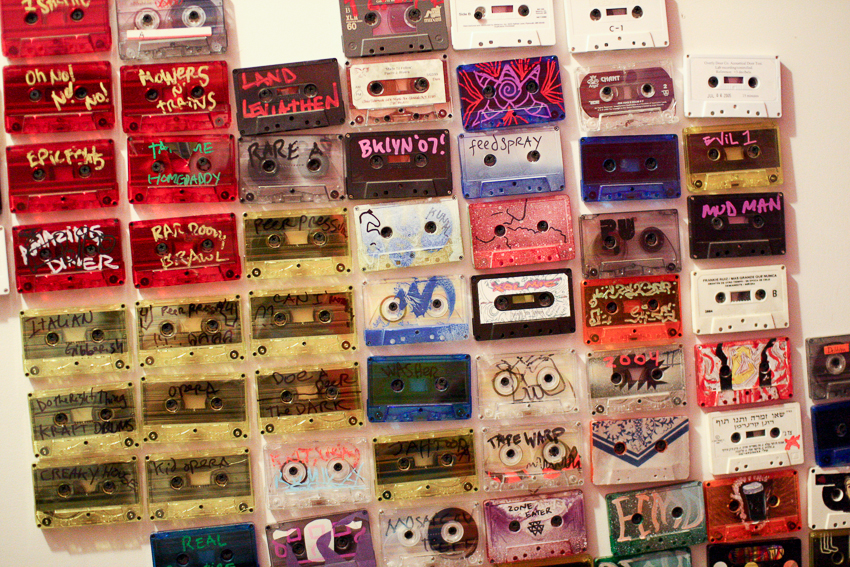
***
brooklyn spaces: Why, out of all the myriad ways you could be spending your time, is Silent Barn where you want to be?
Brandon: I used to do house shows in Michigan, and the intimacy and humanity of that scale of cultural happenings was really important. When I moved to New York I was so depressed, going to all these crappy clubs where they tally at the door how many people paid for your band. It just sucked. And then I found the old Barn and it was so different. It’s a way to exist in New York and interact with other people on a much more human level.
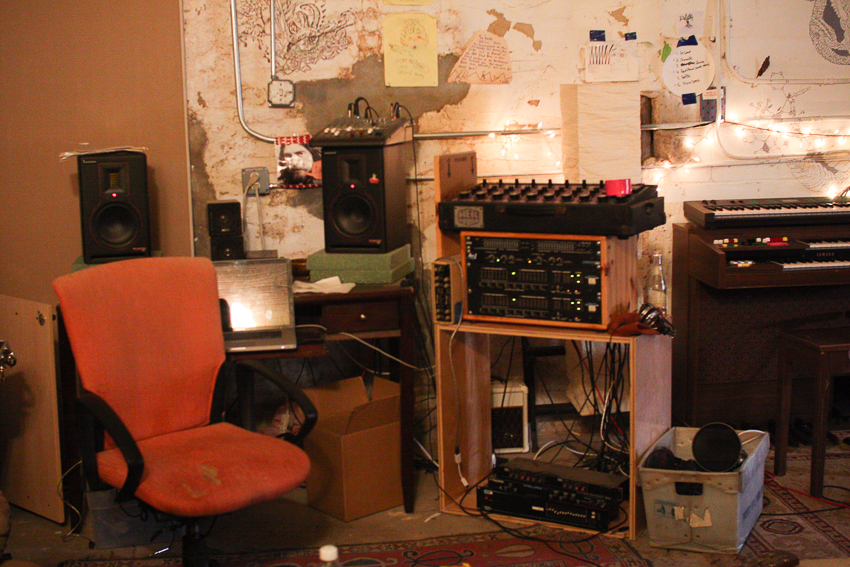
Gravesend Recordings / Future 86 Recording Studio
Katie: I think that’s what a lot of our answers are, actually. I’m from a small town in Mississippi, where there aren’t any clubs or bars or anything, so it’s only DIY stuff, jamming with your friends, playing in someone’s basement or on the beach or whatever. And I was so depressed when I moved to New York too; I got stuck in this dorm with these people I didn’t get, and the Husk was the first place I felt at home. It’s home and family, that’s why we do it.
Larissa (Paesthetics Octopus): I love working toward the future of Silent Barn along with all these other pretty incredible people who all have such different talents and viewpoints, knowing that I might never had the change to even meet them otherwise.
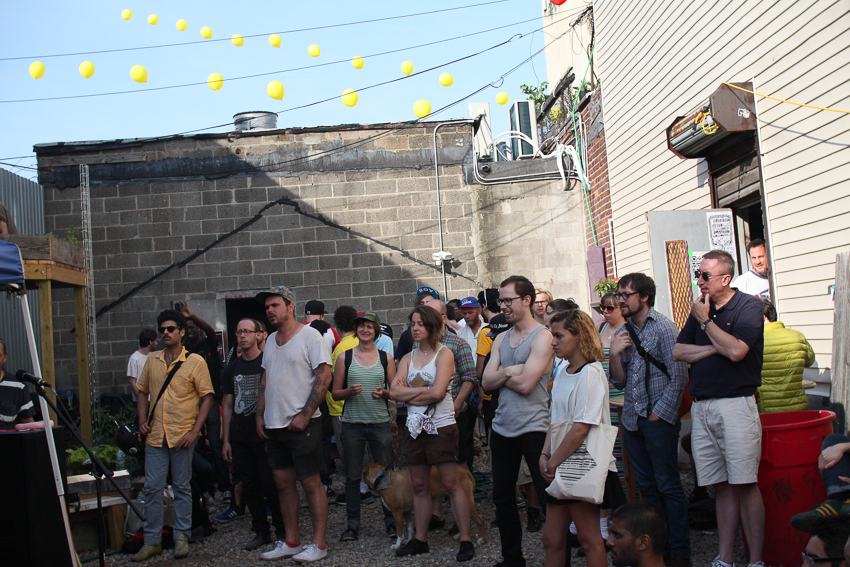
backyard during Warper blockparty
Tricia: I’m here because I can be. I can’t think of anywhere else that would say, “Hey neuroscientist, come have a space!” Not only can I learn about art and music and DIY culture, but I can collaborate with artists. It’s just amazing to do science and art in the same space. And to show it to people who want to see it!
Theresa (Internal Events Chef): Being here lets us work with a bunch of people who are good at things we’re not good at. For a recent show, Martha made a huge dick piñata for us. It would have taken me ages to figure out how to make a dick piñata! There’s so many skillsets here. You can just email the Kitchen saying, “I need this weird thing. Does anyone have it or can anyone do it?” and you get three emails back saying, “I can do that!”
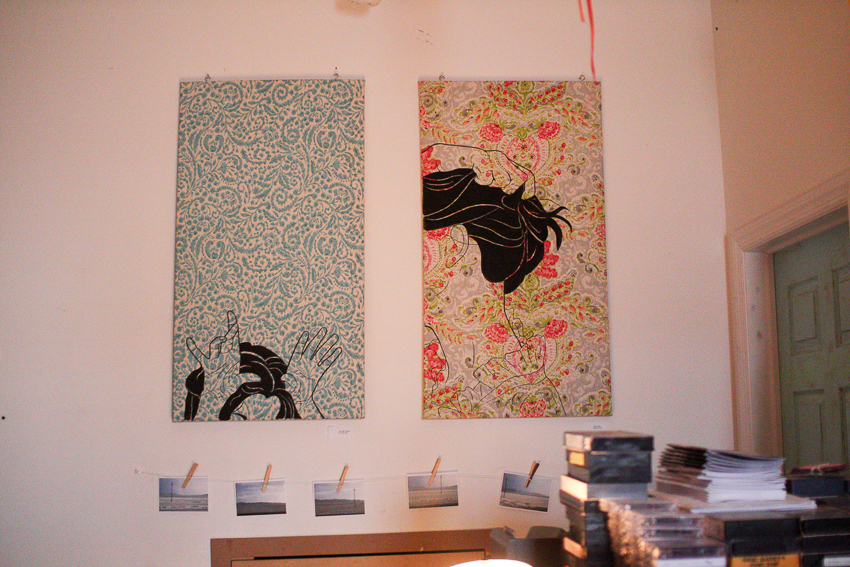
another living room; paintings by Devin Lily, photography by Nina Mashurova
Arielle (Aftermath Supplies): The constant friction and motion of interacting with people, art, life, and general day-to-day bullshit, like emptying trash cans or drinking coffee and sharing “that time I puked” stories over a taco. Navigating a place that is a whole made up of parts, and all the interesting drama that brings about, while ultimately having a community of people who’ve got your back. A second place to call home, to take creative refuge in.
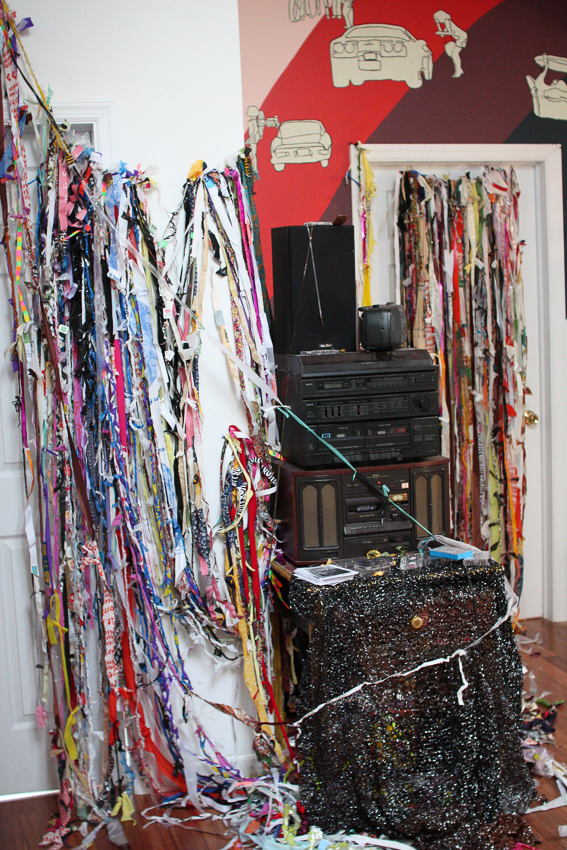
One the living rooms; art by Lena Hawkins, Lani Combier-Kapel, Jen May
Lani (Volunteer Chef): It’s easy to get wrapped in bar culture here, or to just go to a show and leave to go home, fall asleep, and go to your 9–5 job. That’s not the life I’m interested in; I want to be immersed in the art and music that happens here. Being involved in Silent Barn satisfies a part of my personality that helps me grow as an artist and musician.
Eli (Art Chef): Silent Barn is an excellent experiment in joining art, life, and politics. We’ve managed to corral so many brilliant people and force their conflicts and concordances into creating something with the potential to be truly new and exciting.
Nina (hosts Phresh Cutz): It’s this great community environment that really supports experimental ideas or any kind of creative thing. My whole life, the events I’ve really enjoyed and been inspired by have been in community-based creative art spaces like this, so it’s really great to support that and help facilitate it by giving people space to do what they want to do.

Phresh Cutz, photo by Meghan O’Byrne
Kunal (Babycastles): The thing that’s important is the promise of this strange experiment actually producing something of immense value to the world. Once we get all the pieces solidly in place, a massively successful mechanism of including participation from almost anyone interested, a successful “community-building” pathway for any new voice interested in gathering and growing any piece of culture inside of a stew of culture, successfully extending the value of all this community, strengthening the celebration to our direct neighbors and thereby to the city as a whole as a truly exhaustively functioning projection of the social ecosystem that the world should be, the potential for the thing to be so strong that it continues to channel and nurture and organize new voices in art and communication almost entirely, and finally, some sort of flowering and seeding aspect, where the energy is too much for the small space, and the vision encompassed inside starts to blow up, fly with the wind to surrounding areas, and just take over life in the city itself, and the ideas propagate strongly and successfully. Stuff like that.
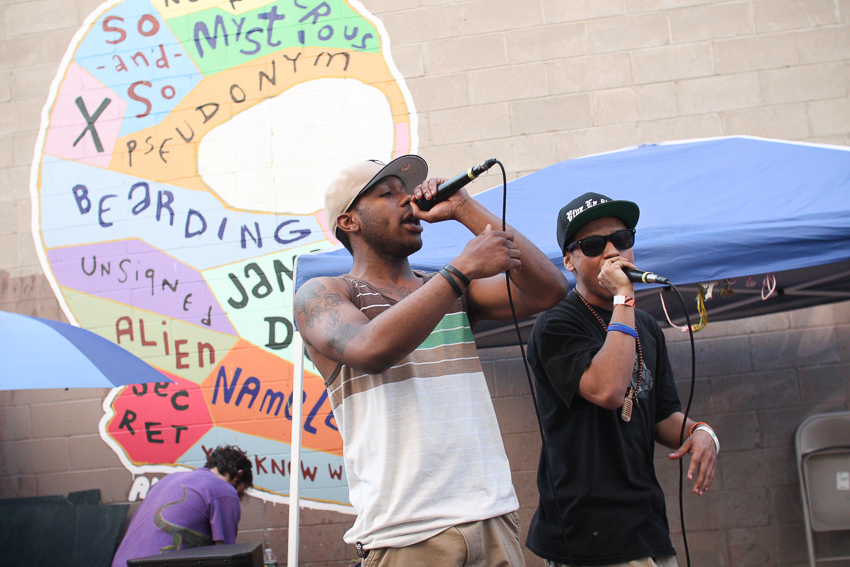
Hieroglyph Thesaurus performing
Joe Ahearn (Showpaper): Silent Barn acts as an artistically inclined autonomous zone, where we get to make the rules and share the work we want and are excited by. I don’t think it’s too different than the DIY ethos of other collective art spaces in Brooklyn and around the world throughout history, but I happen to live here and want to be able to participate directly in the culture I consume, and this is as solidly sustainable a way to do so, on my own terms, that I’ve found in New York.
Mila: The Barn is a place where my ideas about what I can and can’t do are constantly challenged. I am constantly forced to reexamine how I think and how I do things, because infinitely more is possible, permissible, and at stake. Plus it feels like family.
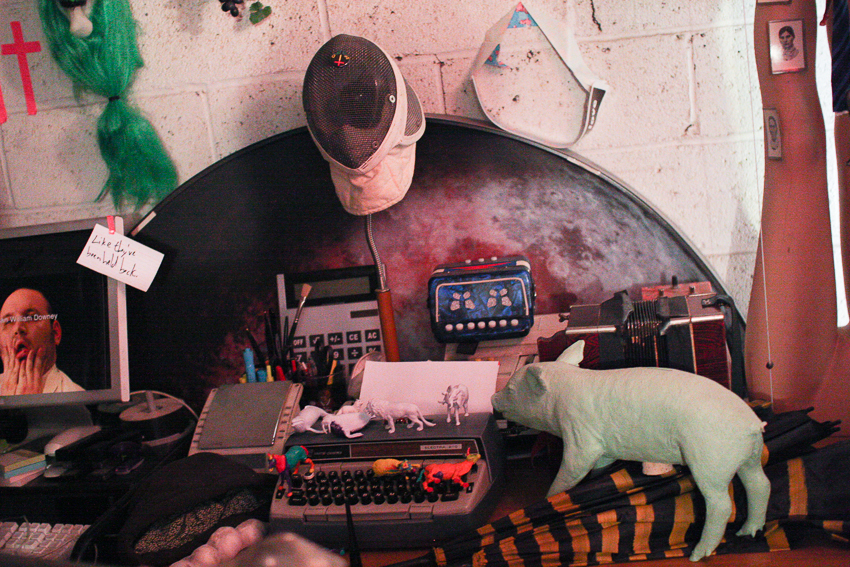
Title:Point theatre company’s desk/workspace.
Nathan Cearley (Dark Cloud Chef): I participate in the Silent Barn because it’s giving vitality and substance and life to the concept of constructing our own world—a concept that I find hyper-American but strangely near extinct in this country today. I love experiencing the art and ideas that all these diverse individuals create and, in a broader sense, I love helping to create the space that makes that human freedom possible.
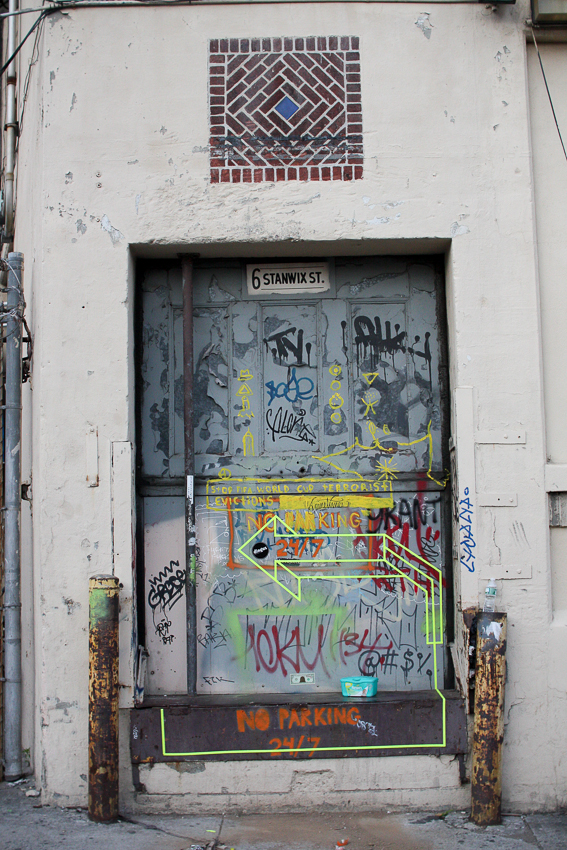
***
Like this? Read about more collectives: Flux Factory, Monster Island, the Schoolhouse, Hive, Bushwick Project for the Arts
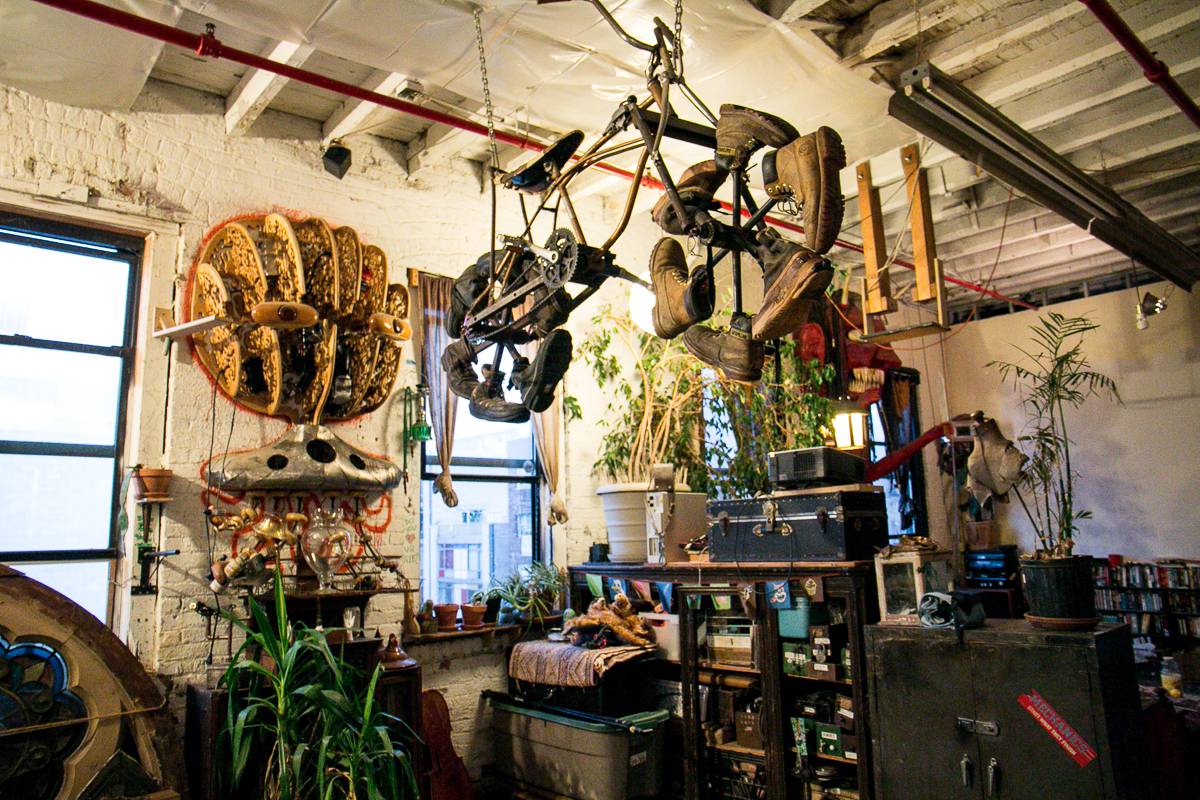
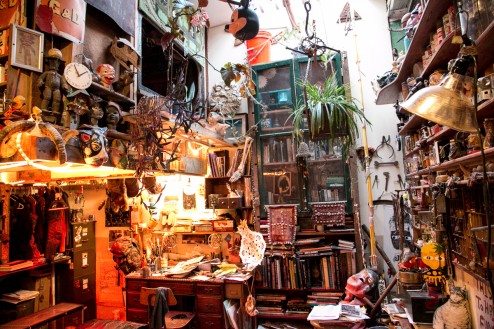
![Chicken Hut founder Greg H. at Bike Kill 2014 [pic by Alix Piorun]](https://www.brooklyn-spaces.com/wp-content/uploads/2015/05/Screen-Shot-2015-05-18-at-7.02.53-PM-494x328.png)
